#its one of those giant microbe ones
Explore tagged Tumblr posts
Note
Hi hello I've never been to your blog before (it looks like a lovely space) but CELLS AT WORK!!!!!! please!!! I need to know your favourite cells (it's for science) and will now burden you with mine;
Mast Cell - so so relatable, my allergies don't bother me nearly as much if I just tell myself that the nice lady is trying her best, peaks when she calls a B cell a bonehead
Langerhans Cell - niche immune cell appreciation, he's hot
Microfold Cell - gotta love GALT cells, also hot
Macrophage - I live for their carnage, any time they appear I grin like a madman
Eosinophil - I 100% kin, absolutely adore her
Basophil - ???? so ridiculously funny that they went "science doesn't really know what this one does, let's have him show up and speak in riddles and then just vanish"
Uhhh... I'm stopping myself here because it's just gonna turn into me listing what I love about all the cells, I'm sorry >< And man, all the bacteria and how well adapted they are from their actual shapes and abilities?? the designs are just so goooood, microbiologist approved lmao
Hope you're having a very nice saturday and taking care of yourself :3
HIHIHIHIHIHIHI omg an ask about cells at work i'm so excited i might cry !!!!!!
please never stop gushing about it, it's my FAVOURITE anime/manga and i never find anyone who knows it exists !!!!!
the macrophages are absolute icons, i adore that they're so pretty and refined but also carry GIGANTIC weapons and fuck shit up on the regular
my very favourites are the platelets, closely followed by White Blood Cell. the platelets are illegally cute, and they work so hard 🥺 and they're so brave 🥺 AND THEY'RE SO LITTLE 🥺 i also love the dynamic they have with everyone ??? the other cells look after them and make sure they're safe and honestly the way all of them lose their minds a little because of how cute they are is SO relatable (i also lost my mind when i was first watching)
White Blood Cell is unfairly hot (um that first shot of him covered in blood???? help) and i just love how much he cares about everyone. the way he follows Red Blood Cell around sometimes to make sure she's okay is so sweet, and he's just very earnest and kind 🥹 also him interacting with the platelets ???? ADORABLE
Basophil is SO FUNNY you're absolutely right, i love how they pull details from the science to add depth - like the monocytes ! that reveal absolutely blew me away, it was so clever!!!!
ugh i just love it all so much!!!! all of the characters are so engaging and it does such a good job of feeling likes there's high stakes while also maintaining the cutesy feel good vibe it's got going on. also it has a special place in my heart because i work in a haematology lab, so i've actually seen a lot of these cells irl!!! me and my work friend did have a slight crisis though because of the platelets - we have donor platelets on site, and we were worried about them being scared bc they're alone 🥺 (yes we are a little strange, it's endearing i promise 💖)
THANK YOU for stopping by to talk about cells at work!!!!! you are always welcome here to talk about anything 💖💖💖
i hope your weekend is going wonderfully, take care !!!!!! 🫶🏻🫶🏻🫶🏻🫶🏻
#rox answers#a cells at work ask ????#omg the message in my pinned paid off#genuinely got so hyped when i saw this ask#fun fact: i have a little white blood cell plushie#its one of those giant microbe ones#they have a range of cells at work plushies#my friend bought it for me last year
1 note
·
View note
Text
Book recs: alien intelligences
Intelligent spiders, octupi, plants, bacteria, and even entire oceans, intelligence without sentience, extra terrestrials and strange intelligences evolved right here on Earth - alien minds can take many forms. Allow me to share with you some books featuring the most alien and fascinating ones.

Previous book rec posts:
Really cool fantasy worldbuilding, really cool sci-fi worldbuilding, dark sapphic romances, mermaid books, vampire books, many worlds: portal fantasies, many worlds: alternate timelines, robots and artificial intelligences, post- and transhumanism
For more details on the books, continue under the readmore. Titles marked with * are my personal favorites. And as always, feel free to share your own recs in the notes!
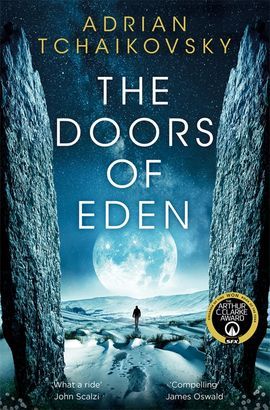
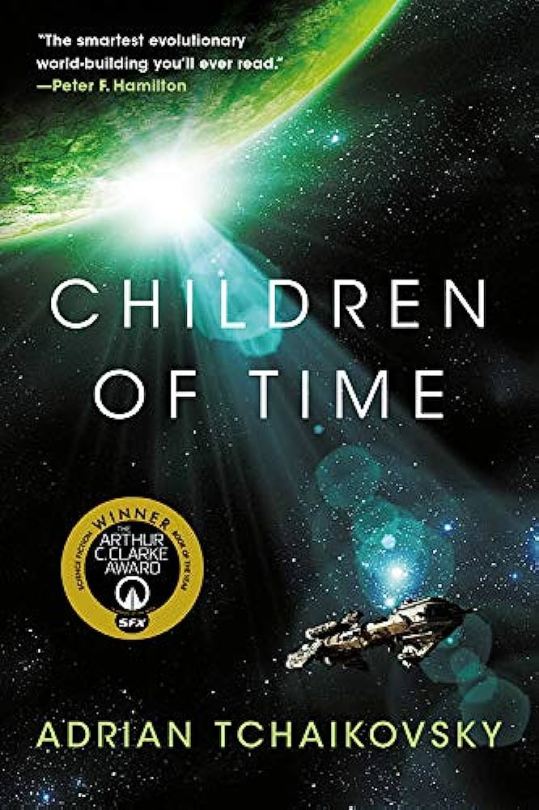
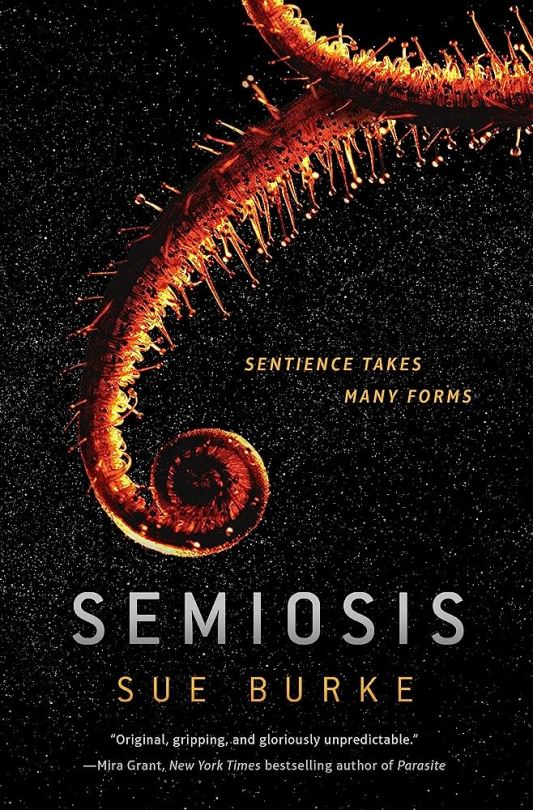
The Doors of Eden by Adrian Tchaikovsky*
The Doors of Eden is something of an experiment in speculative biology, featuring versions of Earth in which various different species were the one to rise to sentience, from dinosaurs to neanderthals. Now, something is threatening the existence of all timelines, dragging multiple different people and species into the struggle, among those a pair of cryptid hunting girlfriends and a transgender scientist.
Children of Time by Adrian Tchaikovsky*
Millenia and generation spanning scifi. After the collapse of an empire, a planet once part of a project to uplift other species to sentience is left to develop on its own, resulting not in the intelligent monkeys once intended but in sentient giant spiders. Millenia later, what remains of humanity arrives looking for a new home, only to be met by the artificial remains of the ancient woman who once led the uplift project - and she is not willing to let them on her planet.
Semiosis (Semiosis duology) by Sue Burke
A generational story following a group of humans trying to survive on a new planet, where a strange and unkowable intelligence is finding ways to use them to its whims. As the humans come across an abandoned city wrapped in the roots of a strange plant, they slowly come to the realization that mutual communication is the only path to peace and survival.

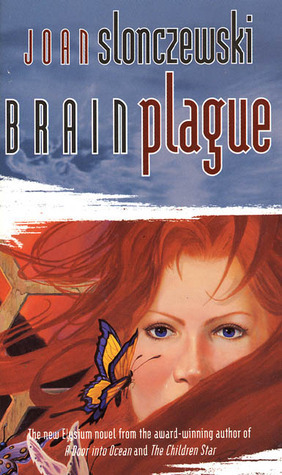
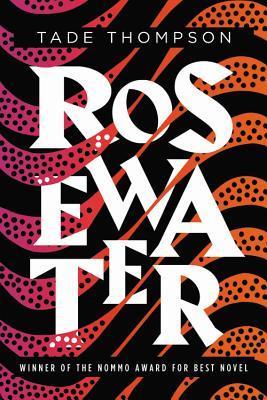
The Three-Body Problem by Cixin Liu
While I felt the characters could’ve been better developed, this is undeniably a well-written novel featuring an alien race and culture developed on a planet vastly different from ours. Firmly in the realm of hard scifi, this is a realistic, fascinating and slightly terrifying look at how first contact may look.
Brain Plague (The Elysium Cycle) by Joan Sloncewski*
Chrys, a struggling artist, agrees to become a carrier for a sentient strain of microbes. With their help, Chrys breathes new life into her career. But every microbe society is different - some function as friends and brain enhancers to their carrier, while others become a literal brain plague, a living addiction taking over the life of their carrier. And like every society, the microbe community is in constant flux - inluding the one inside Chrys's head.
Rosewater (The Wormwood trilogy) by Tade Thompson
In Nigeria lies Rosewater, a city bordering on a strange, alien biodome. Its motives are unknown, but it’s having an undeniable effect on the surrounding life. Kaaro, former criminal and current psychic agent for the government, is one of the people changed by it. When other psychics like him begin getting killed, Kaaro must take it upon himself to find out the truth about the biodome and its intentions.

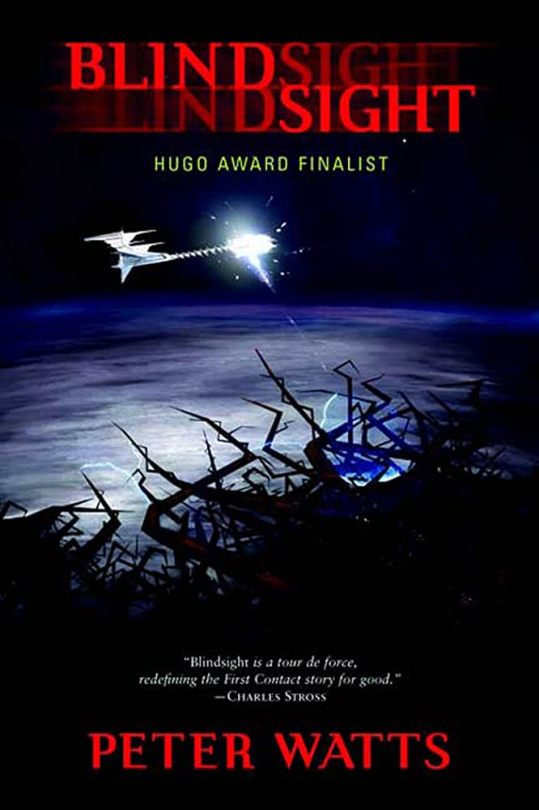

Dawn (Xenogenesis trilogy) by Octavia E. Butler*
After a devestating war leaves humanity on the brink of extinction, survivor Lilith finds herself waking up naked and alone in a strange room. She’s been rescued by the Oankali, who have arrived just in time to save the human race. But there’s a price to survival, and it might be humanity itself. Absolutely fucked up I love it I once had to drop the book mid read to stare at the ceiling and exclaim in horror at what was going on.
Blindsight by Peter Watts*
Vampires and aliens and questions of the nature of consciousnesses, oh my. A ship is sent to investigate the sudden appearance of an alien vessel at the edge of the solar system, but the crew, a group of various level of transhumanism, isn’t prepared for the horrors awaiting them. No, seriously, this book will fuck you up, highly recommend if you’re okay with a lot of techno babble and existential horror.
Midnight Robber by Nalo Hopkinson*
Utterly unique in world-building, story, and prose, Midnight Robber follows young Tan-Tan and her father, inhabitants of the Carribean-colonized planet of Toussaint. When her father commits a terrible crime, he’s exiled to a parallel version of the same planet, home to strange aliens and other human exiles. Tan-Tan, not wanting to lose her father, follows with him. Trapped on this new planet, he becomes her worst nightmare. Enter this book with caution, as it contains graphic child sexual abuse.
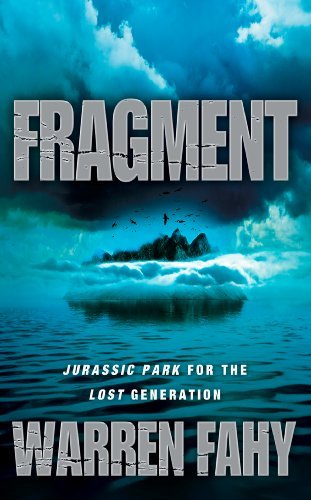
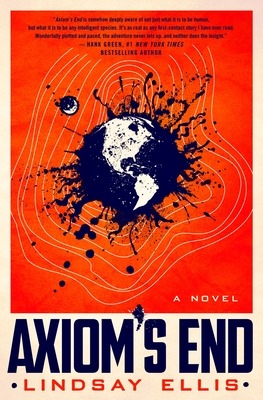

Fragment (Fragment duology) by Warren Fahy*
The reality TV show Sealife is having a rough time - as it turns out, a ship full of scientist doesn’t make for the kind of drama they hoped for. Hoping for some excitement, they reach Hender's Island, a fragment of a lost continent that may contain an interesting new ecosystem. But as they step foot on the island, they quickly come to realize the ecosystem isn’t just new, it’s highly dangerous and very hungry. Among all this life is one single species that may be more dangerous than any other, but which may also be the salvation of the scientists on the island. A bit wonky, but genuinely one of the most fun books I have read, I love it so much.
Axiom's End (Noumena trilogy) by Lindsay Ellis
It’s 2007, and a leak has just confirmed that the US has reached alien contact. Cora wants nothing to do with it, but as her absent father is the whistleblower who dropped the news the media won’t leave her alone. Even worse, she soon finds herself meeting and being pursued by the alien presence itself as it tries to remain in hiding - and discovering that there is a much larger threat on the horizon.
The Road to Roswell by Connie Willis*
Francie has just traveled to Roswell to attend her college friend's wedding to a UFO conspirasist. Not a believer herself, Francie is shocked when she finds herself abducted by an alien. Her abductor is not much what popular media would have you believe, looking more like a tumbleweed than a grey alien, and is clearly on some kind of mission it isn’t willing to put on hold for the sake of Francie attending to her duties as a bridesmaid. As more people get roped along - among those a conman, an old lady, a ufo conspirasist, and a retiree with an RV - Francie finds herself getting closer to the alien and wanting to help it succeed.
Bonus rec: if you like this book, you may also enjoy the movie Paul, which has a similarly humorous tone and similar plot.
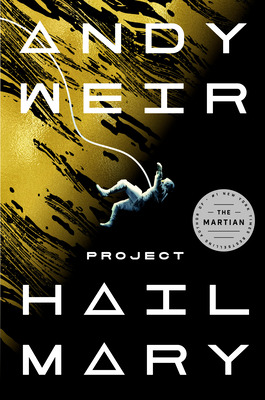
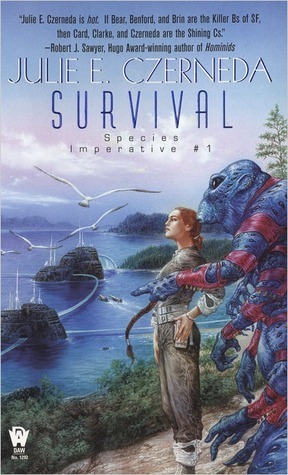
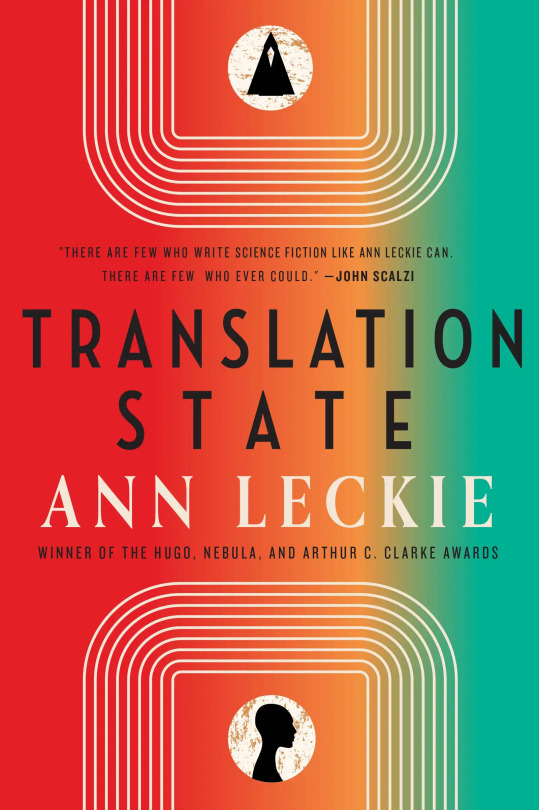
Project Hail Mary by Andy Weir*
Ryland Grace just woke up up from a coma, unable to remember anything. He finds himself alone on a space ship, and as his memories slowly trickle back, he realizes he's been sent on a mission: to find a solution to the impending doom of the earth. Still struggling with holes in his memories, Ryland tries to fulfill his mission, but as he gets closer to his goal, he discovers someone else got there first. And they aren't anything close to human. Funny, heartfelt, and heavy on the science.
Survival by Julie E. Czerneda
Mac, a biologist studying salmon on Earth, has little interest in life beyond her own planet. Despite this, she’s sought out by Brymn, an alien archaeologist hoping her expertise as a biologist can help him solve the secret behind the Chasm, a region of space completely devoid of life. Trying as she might not to get incolved, Mac has little choice as she and her colleagues come under attack by the mysterious Ro, the species Brymn's people suspect to be the cause of the Chasm.
Translation State by Ann Leckie*
An exploration of the alien as filtered through the human. At what point does the human become something else? When does something else become human? Is it a question of biology or culture, nature or nurture? Can we choose it? Can it be forced upon us? Set in the Imperial Radch universe, Translation State follows three different characters embroiled in the question of what makes a human. The alien Presger can only communicate with humans using their translators - people they’ve created that are not quite human and not quite alien. But as news of a translator fugitive arises, conflict brews regarding what right they have to choose their own identity and home.
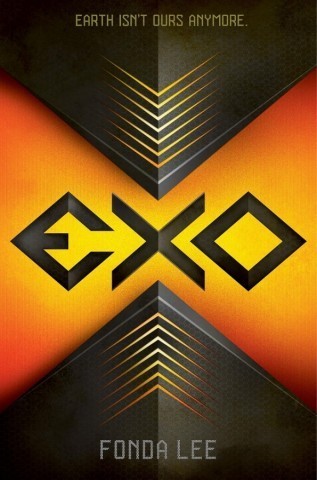

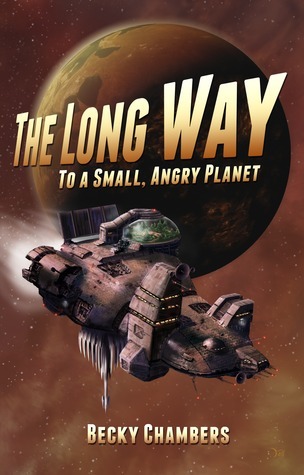
Exo (Exo duology) by Fonda Lee*
Young adult. Earth has long since been under the control of an alien presence. Donovan Reyes is an exo, a human enhanced with alien technology, working to keep the colony and its people safe. The biggest enemy is Sapience, a terrorist organisation opposing alien rule by any means necessary. When a mission goes awry, Donovan finds himself abducted by Sapiance, something that risks a war. While it took until the second book for me to be fully sold on this series, it features a genuinely nuanced take on oppression and resistance rarely seen in YA genre.
Needle by Hal Clement
1950s classic. A small island in the pacific ocean and a fourteen-year-old boy have just become the center of an interstellar chase between an alien Hunter and the criminal he's pursuing. Robert is a regular boy, but he has a very special passenger: an alien symbiont hiding inside his body. The alien became stranded on Earth as he pursued a criminal of his own species, and now they are both trapped on the same island, playing a game of cat and mouse as Robert and the Hunter struggle to find their prey before it finds them.
The Long Way to a Small, Angry Planet (Wayfarers series) by Becky Chambers
Rosemary Harper just got a job on the motley crew of the Wayfarer, a spaceship that works with tunneling new wormholes through space. With a past she wants to leave behind, Rosemary is happy to travel the far reaches of the universe with the chaotic crew, but when they land the job of a life time, things suddenly get a lot more dangerous. A bit of a tumblr classic in its day, this is a cozy space opera with an episodic feel and vividly realized characters and cultures.

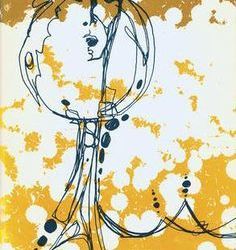

Under the Skin by Michel Faber
A dark allegory of alienation and dehumanization, Under the Skin follows Isserley, a woman traveling along the roads of England and picking up hitchhikers. Little does her passengers know, she’s an alien hiding her true self, and they are her prey and a delicacy for her species.
Solaris by Stanislaw Lem
1960s Polish classic. Arriving on a station orbiting the planet Solaris, Kris Kelvin is meant to study the strange, possibly sentient ocean that covers its entire surface. But the effects of the ocean are far reaching - Kelvin finds the crew of the station secretive and unstable, and is shocked to wake one day to the embodiement of a long dead lover. Was it created by the brain-like ocean, and if so, why?
West of Eden (West of Eden trilogy) by Harry Harrison
65 million years ago, the meteor that killed the dinosaurs never arrived. Without it, the dinosaurs lived and thrived, allowing a the complex society of the matriarchal Yilanè to arise. Meanwhile, in the new world, humans still evolve, and when an impending ice age forces the Yilanè across the ocean in search for a new home, the two are destined to clash. A bleak story of the cycle of violence and hate leading to war, West of Eden is a marvel of world-building.
Bonus AKA I haven't read these yet but they seem really cool
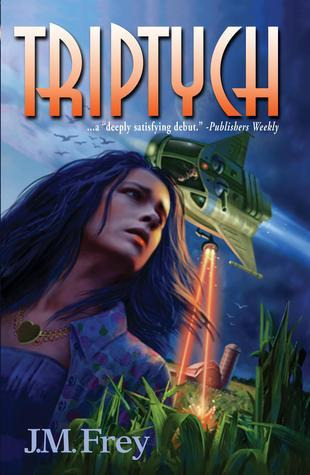
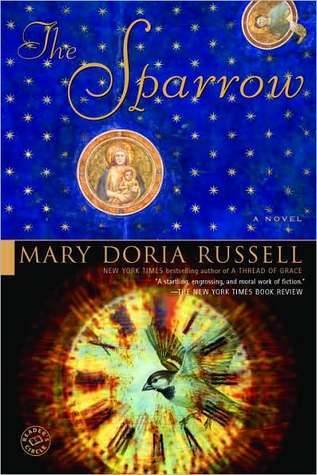
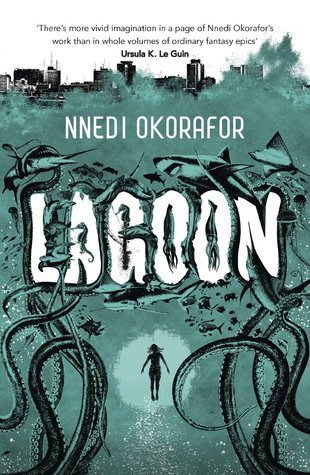
Triptych by J.M. Frey
Kalp is a widower and alien refugee newly arrived on Earth; Gwen is a language expert secretly recruited by the United Nations to help integrate a ship of alien refugees; Basil is an engineer who loves them both. Together they must defend their relationship against a violently intolerant world.
The Sparrow (The Sparrow duology) by Mary Doria Russell
When proof of alien life is found, the United Nations are too slow in their plans for a first contact mission. Instead, the Society of Jesus overtake them and send their own ship, but the crew could never have been prepared for what they will find.
Lagoon by Nnedi Okorafor
Something massive and alien crashes into the ocean off the coast of Nigeria. Three people, a marine biologist, a rapper, and a soldier, find themselves encountering this presence, and have to race to save humanity before it's too late.
Honorary mentions AKA these didn't really work for me but maybe you guys will like them: Salvaged by Madeleine Roux, Exodus by Nicky Drayden, The Lesson by Cadwell Turnbull, Embassytown by China Miéville
#nella talks books#the doors of eden#children of time#semiosis#the three-body problem#brain plague#rosewater#xenogenesis#blindsight#midnight robber#fragment#axioms end#the road to roswell#project hail mary#species imperative#translation state#exo#needle#the long way to a small angry planet#under the skin#solaris#west of eden#there are more alien centric books that I love#but this list is pretty focused on books where the truly alien unkowable and inhuman is central#so anything featuring human looking or acting aliens got disqualified#same as books where the aliens themselves weren’t very central#also i need you all to know that i have had official art of the 'alien' from Fragment as my screensaver for a decade#that book is so silly goofy dialogue and absolute gory slaughter i love it so much#i still have one of these rec posts in my drafts but! will soon post a new poll in preparation for more
811 notes
·
View notes
Note
huh...
So when the Archivist find a planet capable of sustaining life but currently without life, they... Release single celled organisms? ...Just to archive them in the future? That's so odd to me.
Why not just wait, is archiving some sort of deep-seated urge or instinct that they NEED to do? Isn't it counterproductive to not just let life naturally develop, or is artificially creating new life apart of the reason they exist?
The short answer (its kinda a tdlr, the text got long)
So life develops slowly and needs stable conditions, what is hader when things like stars have finite lifespans (our Sun is already halfway through!). The Starchildren can’t create life or bring it back, and not all planets have the right conditions for it to start in time when planet is habitable, but might adapt once it’s there. They treat planets bit like gardens in a region where apocalypses are common, with the Archive serving as a storage for seeds, saplings, and tools. Its more usable and not as much lifeless museum of life
Most planets do well on their own, so only parts are collected but beyond that left alone, and some are destroyed or struggle to progress beyond microbes. In those cases, they might step in to improve conditions or remove threats. Sometimes, they just observe how life adapts to what chaos it has. If it can.
There are also personal reasons for work, things like attachment or desire for control, but their mission began when the first life-sustaining planet was destroyed, leaving them alone in the void believing everything was lost forever. When life SLOWLY re-emerged on other worlds, they began preserving and protecting it, spreading across the void.

Long answer under the cut
Life in general develops extremely slowly. Earth is around 4.5 bln years old (Ga), it's estimated that it took around 1,1Ga to go from anoxygenic bacteria to aerobic bacteria (after some ox producing bacteria ruined the party for all those who couldnt deal with it, also called Great Oxygenation Event). From there, it took roughly 0,5 Ga for eukaryotic cells to develop. Shortly after (like 0.1 Ga), life transitioned from single-celled to multicellular organisms. In comparison it took 1.7 Ga for evolution to progress from algae to humans—about 1.6x faster than the journey from primordial soup to microbes
There could be planets capable of supporting life that are just off the mark, preventing organic material from developing well enough. Some might have all the right conditions but lack the right combination of energy sources, maybe too far from a star, maybe something else. But, once life forms and we get a "Last Universal Common Ancestor" (LUCA) It could spiral to the point where, as on Earth, almost no surface remains untouched by life (you really don’t want to know how many bacteria are on your phone). But thats only really because life got a really good footing here. If a catastrophic event wiped out all complex life, bacteria adapted to extreme would probably be fine and maybe evolve further.
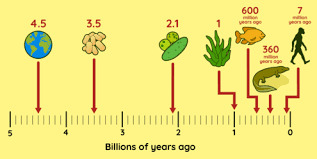
If primitive cells formed under specific conditions and those suddenly changed, all that progress could halt or go back entierly to a primordial soup (Going with the Heterotrophic Theory, this is my gen favourite term for this, soup). And there is another aspect. Suns are not eternal; our sun, at ~4.5 Ga, is already halfway through its lifecycle before becoming a red giant. At that point, Earth will lose its "habitable" status. If Earth went through a hard reset, and assuming everything went the same, next intelligent life might be one witness their star’s death, sooo there is a finite window of habitability.
Each evo step is faster than the last one, Archivists intervene at mostly early stages making the beginning bit smoother, more controlled. They aim to make planets with potential more habitable or stoping them from losing it. For example they might create an atmosphere if one lacks it but is otherwise perfect, and past that let life develop naturally.
And even with perfect conditions, factors like astronomical events could mess up whole process. In the infinite space it's not really a question of if but more which planet heads into a catastrophe, so they stay around. Archive functions like a backup, preserving progress where possible. If a planet faces extinction, they might change the enviroment, whatever is esponsible for it, maybe introduce creatures more capable of surviving—or even short-lived organisms, some that arent meant to survive but will provide enough short term nutrients for the native organisms to pull through.
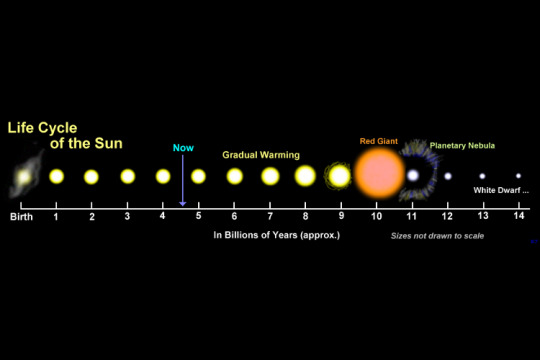
That being said they usually try to avoid too much interferance, sometimes its just patching up small element before it becomes an problem. But sometimes they will just stay clear. If one is doing okay or particularly fascinating they'll stay back and watch how it adapt to the unique environments. World where due to temperatures the only habitable zone is on the edge of a star’s light? Organisms adaptation might give some insight for future and give templates for backing up similar ecosystems elsewhere. But there are limits to their interference. If saving a planet requires more effort than its results justify, they let it fade, something Wayfarer was upset about
There’s also a personal element. Archivists sometimes release life forms they’re familiar with—ancestors of creatures they once befriended. While they know these won’t develop into the same beings, it’s comforting to see familiar traits re-emerge (and to know how to deal with them). When universe is so hellbend on reminding of inevitable end, its a small victory.
Those are some words about methods, when it comes to why they even start its bit diffrent. The Starchildren’s mission stems from witnessing the first total extinction of life on a first developed planet. Unable to create life or reverse what had happened, they were confronted with the vast emptiness of the void and believed all was lost, that was it. And then saw the painfully SLOW emergence of life elsewhere, collectors agreed on a mutual goal to prevent life fading out of existance, not taking for granted it will work out. Bit ironic joke of fate that ones suited to live in isolation of void are also one to seek company. When the only other comapny is one that lives in blink of an eye its easy for the unguided Starchildren with almost divine power develop some quirks and complexes (not an excuse, just a reason).
But maybe its by design, just the right trait to have something always watching tirelessly over the gardens, ensuring there is someone there. I wouldn't say there isn't a quiet internal push for it, a drive that took root in the right environment and grew into a lifelong mission. Magic, like energy, isn’t created—it once formed part of Everything. When Everything awakened, it wanted to be more, sought to ensure there would always be something
#Thatssss a long one i wrote it on my notebook a while ago and took a moment before transcribing#toh#the owl house#toh archivists#the archivist#toh collectors#toh fanart#owl house#the collector#toh collector#regulart#ask#toh the collector#the collector toh#collector toh#sketches#toh comic#toh the archivists#the archivists#c:i architect#c:i anatomist#c:i wayfarer#c:i Curator
49 notes
·
View notes
Text
Qunlat 2/12: Canon, and its various disagreements
⭅ Previous =⦾ Index ⦾= Next ⭆
Before I can dig into the actual sound and structure of Qunlat, I have to first dig into the structure of Dragon Age itself, because… well, the sound and structure of Qunlat changes depending on when it was set down. Whatever version you like is totally up to you–I’ll be trying to document all of them, but also begin explaining how to curate the language to your desires.
I want to preface this: anybody who prefers what goes on here is totally valid. But I am going to get into some analysis of why, from a conlang hobbyist’s perspective, a fair chunk of later Qunlat doesn’t feel like the same language we’ve previously been presented, and why certain sources should be treated as less authoritative than others.
And I will begin with a comparison: Star Wars. No, no, come back, I promise this won’t hurt!

During the reign of George Lucas, Star Wars continuity and fandom explicitly drew distinctions between levels and eras of canon: The movies were the prime source that could ignore all others. Tie-ins could expand the setting, but due to less centralized direction, they could vary wildly in depiction of everything, including “facts” of the setting. How does the Force work? Are microbes involved? Any cosmic beings or liminal spaces? Do any of them seem suspiciously influenced by Dave Filoni’s wolf obsession? Even the movies don’t always agree!
Fans and official lorekeepers also recognized the difference between when something was made, or which publisher was involved: Tie-ins from the early years were less likely to be compatible with those from later times, and different production houses had their own internal continuities. Did Han Solo fight alongside a giant carnivorous rabbit in a red onesie? Well, he didn’t mention that when interviewed by a monk from a religious order where the enlightened masters become mecha-spiders! Did an omnipotent, insane entity once kill Princess Leia by turning her heart into a diamond? Maybe we could find out, if someone decompiled the memory banks of her assassin droid double who was sent to marry and shoot a three-eyed fake heir to Palpatine’s throne! Did a trans-dimensional scaly jello cube once run a faith healing scam? It’s been banished from the continuity of most tie-ins since then, but it was published under the official Star Wars license! I haven’t made up even one of these!


Equally, fans might also freely decide to ignore earlier or later aspects of canon, because they had their own sandbox they liked to play in. Even parts of generally beloved stories may be generally ignored (hello, Luuke). And all that was common long before you even get to the Disney takeover, when much of the creative direction changed.
Dragon Age, as a fifteen year old franchise (ow, my bones) that has attempted to be aggressively multimedia and has not maintained a single, unified creative team, is prone to these same eccentricities and inconsistencies. Sometimes things happen for no serious reason whatsoever. Remember when baby Superman landed in Ferelden? I remember that. Doctor Seuss is a dwarven Paragon, by the way.

These are meant to be jokes in the games, sure, but the rules around magic and lyrium change with every game, and on the subject of languages, we also don't have a consistent writing system for the Common Tongue.
Throughout the series, early material conflicts with later, tie-ins conflict with games, individual games may be internally inconsistent, and a sole truth fundamentally does not exist for the canon.
This is particularly true for ancillary material, which Qunlat can be counted as. It’s a constructed language that isn’t from the main setting. Even when lead writers have been involved in its depiction, the results have sometimes been completely incompatible with the rest of its appearances.
I am attempting to document this language in a comprehensible fashion. You can see how this might cause problems.

So I am going to try and draw some distinctions. This should be particularly useful for anyone trying to reconstruct things from the wiki’s dictionary and phrasebook, which does cite sources, and includes everything, regardless of linguistic and stylistic incompatibility.
Dragon Age: Origins and Dragon Age II have a relatively high level of internal consistency in their spoken Qunlat. Things Sten says seem mutually intelligible with what we hear from the Arishok. There are exceptions–a couple rogue words in DAO and Warden’s Keep that indicate some level of uncertainty about the overall shape of the language, and Mark of the Assassin has a few eccentricities, but is largely in line with the two. A large portion of our dialog in DA2 and its DLC has never had a translation provided, but the sound of the language remains consistent. Mary Kirby (formerly of BioWare) was Sten’s writer for DAO, so we can guess that she was the primary source for these games.
Grammar-wise, more complexity might exist in some of the Arishok’s untranslated lines, but my best attempts to analyze them indicate they may be on shaky ground, detail-wise. Words slide around each other in strange ways, though they all sound like the same language.
The one major exception to that unity: DA2’s Qunari armor and weapons. These include some extremely strange additions that are not reflected in the spoken language. New sounds and letters enter the language that were never there before. I’d hazard a guess that either a different writer got involved with naming these, and/or the documentation available was not well-organized or transmitted. When finally defined for certain in World of Thedas Vol. 2 some years later, many of the equipment terms have mistaken etymologies.

Dragon Age: Inquisition continues that trend. There’s more words that have spurious etymologies. Some words have inconsistent spellings. Some sentences accidentally a word. The wiki’s does not help matters, with some statements from the Iron Bull taken as definitions when it doesn’t seem like they’re supposed to be.
During this period, Mary Kirby and Trick Weekes started answering questions about the language on twitter. For our Qunari-focused purposes, Kirby started out the series as Sten’s writer, and Weekes was Iron Bull’s writer, and so we may see differences in authorship between the two. Kirby answers most of the questions about vocabulary, and the answers mostly fall in line with previous Qunlat.
The same goes for Tresspasser. While its new Qunlat vocabulary is unfortunately minimal, the contents largely have the same linguistic feel as the rest of the language, grammar is consistent, and new words make etymological sense. A convert practices their conjugation tables, much to my delight. The language does strain against the relatively limited grammar it contains, though, with Viddasala’s lines in particular feeling like they’re missing connective tissue.
Secondary material far less consistent. Web series and comics like Redemption, Those Who Speak, and the currently-releasing Vows and Vengeance podcast* all are produced with less direct oversight or restrictions of medium and resource availability, tend to be highly divergent in general, and that definitely includes their Qunlat. Tie-in books like Tevinter Nights are only slightly more consistent, but are still of variable quality.
And then there is The World of Thedas.

That's not great.
While the two volumes of WoT scratch the itch for Delicious Lore, Volume 2’s unique additions to Qunlat are contain some glaring incompatibilities with the rest of the series. Volume 1 has a bit of in-universe disclaimer near the start of it, that all sources are biased and imperfect. Volume 2 includes errata from the previous book, including a walking back of ideas like “The Antaam stages duels to the death for promotions”, replaced with “actually the Orlesians made that up during the Exalted Marches to scare their kids”. So, we can see that real-world creative decisions were changed between the two books. That’s understandable.
Unfortunately for our purposes, Volume 2 also includes the largest corpus of grammatically complex Qunlat sentences in the entire series, and they appear to be deliberately sloppy.
I now have to introduce you to my nemesis, Philliam, a Bard!.
This poxy little creature is a character credited in The World of Thedas, Volume 2 as transcribing and “loosely translating” phrases spoken by Qunari soldiers at rest. These sentences are of variable quality, featuring misspellings of pre-existing words, absolutely bizarre sentence structure, and words that previous Qunlat simply can’t support. It’s like reading English and then suddenly you appear to have stumbled into a rogue word in Sḵwx̱wú7mesh.
I focus (saltily) on this for two reasons: First, Philliam, a Bard! is treated explicitly as an unreliable source. I have seen some folks reference his vocabulary in other contexts before, and it shows up in several dictionaries, including taking cues from his pronunciation guide. Do not trust anything found exclusively in his excerpts to fit with the rest of the language: he is intended to be a foreigner who may not fully understand the language, and may, in fact, just be making shit up.
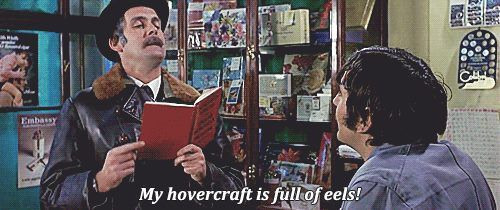
Second, and I may be reaching a little here: as a constructed language hobbyist, I know how things go sometimes. You’ve come up with some sentences you want to translate into your conlang, but you realize you’re lacking vocabulary for it, or worse, you don’t have enough grammatical complexity to even structure the concepts you want to convey. …But you’re really tired, or only have a few minutes to poke at it, so you just fling down some new words and grammar that conceivably look like a translation, though you’re not quite sure how. This is especially common for new conlangers.
These sentences feel like that kind of thing was going on there. I’ll get into the details of why much later, but for now: If something you like in Qunlat contradicts Philliam, a Bard!, don’t feel wedded to stuff from him. He is, both in and out of continuity, an unreliable source.
But if you like Philliam, a Bard!? Go for it! My grumbling is entirely immaterial, DAI and WoT2 add in a bunch of vocabulary that people may want to draw from. Hopefully this post has provided some pointers on how to tailor Qunlat to your own interests. For those who may be interested in further tweaking Qunlat, I’ll give advice later, when we dig into some changes I personally made while trying to expand the language.

The one piece of advice I’ll give now: Beware the wiki’s dictionary. It’s a heroic work to source as many words as they did, but I’ve noticed some typos in their Qunlat (ex. Aqaam written as “Aquaam”), some definitions include irrelevant and misleading information (maraas-lok is the name of a strong alcohol that literally means “no(thing)-thought(s)”, and does not seem to be a verb for “drink”. Bull is just drunk and trying to get you to drink.), some words are fully unsourced, some are missing (placenames especially), and the citations are not comprehensive and do not necessarily list the first time a word appears in canon.
So I have made my own dictionary. It’s mostly based off of theirs, and retains the wiki’s definitions for those who want those. But it also features an accounting of which words show up in which sources, as well as my own notes, which include further definitions based off of verifiable context, etymologies of compound words, corrections for wiki or canon errors, and my suffering through the works of Philliam, a Bard!. I’ve gone through all of DAO and DA2’s subtitles, and World of Thedas Volumes 1 and 2 to verify the vocabulary they include, and at some point I will probably do the same for DAI and Trespasser. Tie-ins are lower down the list, for the reasons I explained above.
Qunlat’s phonaesthetics will be covered this time, as this is what drew me in first, and laying them out will help readers create names or new words that sound Qunlat.
⭅ Previous =⦾ Index ⦾= Next ⭆

Footnotes
* I haven’t been following Vows and Vengeance, but the only Qunlat in the transcripts is all stuff we’ve heard before, the rest is simply glossed over as stage directions of people chanting or yelling a “FOREIGN TONGUE”. Someone in the YouTube comments identified Taash's chanting as the prayer we hear Sten recite in Origins, so that's almost all of it accounted for. I may listen and see if I can make any sense of the rest of it later, but I have a questionable ear for transcribing languages, so if it's new content, my results may not be 100% accurate.
19 notes
·
View notes
Text
Light as a Feather
Do you know that GIANT Microbes sell a number of heart plsuhes, including a Heart of Gold plush? This little number is inspired by them.
Enjoy and be gentle. ---
The scales stared mockingly at Jake, the sight of it weighing on both the heart in his chest and the fake one in his hand.
It had started a week prior. For whatever reason, Steven had bought those scales, and had them jury-rigged to always be lower on one side. Then he put a metal feather on the lower side and two golden heart plushies from someplace online on the other.
And now, Jake was standing there with a slightly different plush rom the same place. He looked down at it, rubbing his thumb along the black embroidery on its front. Why had he bought that one?
For a moment he thought about what he was going to do. About giving a sign. But it was far from the first time, was it? The date, the van, the rooftop, when they were dead, Ammit-Harrow. How many more hints could he give? "Maybe," whispered a harsh voice, "they don't want to know you. Why else would they keep ignoring you?"
Two goldfish swimming in the tank. Two hearts on the scales. The third crying out for the others to help-
Jake tossed the plush aside and marched out. It was a stupid idea anyway.
---
The soft broken heart in Steven's hands felt like lead. "Why didn't we let them out?" finally filled the silence inside and out. "I don't know," Marc rasped, "I don't know." "...Any idea how to fix it?" "Nah...But, I might know where to start."
---
Déjà vu hits Jake like a sledgehammer when he wakes up. Standing before those dammed scales, fake heart in hand. Frustration surges up. He goes to throw the plush with force, when he gets a good look at it.
Gold. Bright shimmering gold, with wide eyes that looked up at him. Jake stared back before blinking up at the scales. Two still sat there.
Almost as if on its own, Jake's arm moved from its position to place the heart with its brothers. As soon as he let go, he braced. For the scales to suddenly shift and lower with a slam. For raised voices to start demanding answers. To suddenly blackout.
Nothing.
Jake looked at the three hearts, breathing deeply. He could feel them. They were awake, they knew. It was what he wanted, so why were his hands shaking?
"I'm-I've-" Every attempt to explain himself stuck in his throat. Silence continued, then warmth filled Jake. It wrapped around his mind from two directions like a blanket. He sighed and mentally leaned into it.
Questions would likely still come, arguements likely following. But three hearts were sitting on the scales, as light as a feather.
9 notes
·
View notes
Note
Okay but I really like your headcanon that iterators are giant hivemind organisms
Its outright stated in-game thar iterators are basically collections of super-smart microbes working together. The idea that they can desync??? AGH that's so creative and interesting!!
(Also did you know that biological computers actually exist. Scientists have made computers using brain cells and think it may be the future of computing. IRL iterators when)
I would also like permission to borrow this idea because it would work perfectly for one of my own iterator characters 👀
Also, brain food--
When you think about it... iterators are just giant sapient siphonophores.
I MEAN LIKE YEAH, IT'S... KIND OF IN THE GAME not entirely Spot™ original idea, that they are hiveminds. prolly more like one of those "notices smth, proceeds to crank it up to 11"
love taking fictional things and seeing how much i can break 'em <3
DON'T! speak to me about shit like that. no. that just ain't natural. i'm still trynna cope with the existence of roombas, segways and seedless watermelons. none of that is fuckin right n has no business existin. hell nah
i mean like yeah, sure, i guess- but i Would like to reiterate that i support and think people should try to think of their own stuff. for the variety's sake and exercise of own mind as well. if it ends up similar to my stuff then Sure, i will Not mind. whatever with this kind of a broad concept, but you know,,,,,,, putting some effort into a thing will make it more rewarding and fun
"LOOK AT ALL THOSE PHYLUM CNIDARIA BITCHES."

SEE- i Have been goin hog over the unitentional similarities between my takes on the Ancients n the Iterators, oh thank fuck i now have a name to put on those bitches. thank u
12 notes
·
View notes
Text
The Tetrarch
Even deities can become bored. Enough time watching creation unfold must leave them jaded, indifferent. After all, a being able to exist independently of time and space and observe and influence any natural process it wishes to will eventually exhaust the novelty of even a neutron star’s mind-boggling rotational speed, or a supernova’s impossible might. Every now and again however, some phenomenon stumbles into existence that warrants their renewed attention. This was the case on a rather dull, rocky world, with the spontaneous emergence of an oddly complex and organized chemical reaction that would one day call itself Life. This was curious indeed. Watching slime self-replicate with a sense of awe they had long since lost for the reality-crushing density of black holes and the fusion-forges at the hearts of giant stars, they hung on each marvelously absurd development. Microbes that outsource reproduction to other species. Colonies of terrestrial algae that build polymer towers many meters into the air. Gigantic, two-legged artiodactyls that endure the weight of the ocean itself as they dive after predatory molluscs. All of this the result of one chemical coincidence that happened to go on, and a natural feedback loop that tuned genes to the present environment, natural selection. But selection could be intelligent as well. This was demonstrated when a species appeared that learned to manipulate the process which had wrought it, albeit accidentally at first. By favoring those traits that appeal to us, we encourage their presence in the population, influencing evolution as we desire. Artificial selection has made us successful and left a permanent mark on the history of life on Earth, even in the little time that it has been in our limited hands. There are far more capable hands, with far more time, in the universe. The deities were excited to experiment with evolution’s possibilities, but they had concurred that Earth itself was best left undisturbed in light of its uniqueness. So they brought Earthly life to the stars, where they could culture new biospheres without altering the old. Soon, the skies were filled with these gardens, seeded with the forms their respective deities had grown most fond of. On some of these worlds, a selection of species was simply left to its own devices, demonstrating their evolutionary potential without intervention. On others, the deities saw opportunities to explore evolution under strange circumstances that would be impossible naturally, conjuring up surreal biospheres limited by little but their imagination. There were those that saw value in subtlety, however. It took only a slight push to encourage interesting forms, allowing the deities to derive their aesthetic preferences from the life they had chosen. And over time, this came to affect the character of entire ecosystems, entire worlds, shaping them to the whim of an intelligent being. From the perspective of evolution, this was just another set of selective pressures, responded to as any other by the same system as had created Earth’s life in the first place. However, this was also the birth of a third selective force, as potent as artificial selection, and as elegant as natural selection, turning life itself into a grand medium of creative expression. Divine selection.

The Deities and Divine Selection
The Ancestors
#biology#fantasy#ecology#worldbuilding#seed world#speculative evolution#spec evo#spec bio#speculative biology#the tetrarch
7 notes
·
View notes
Text
BOOK. I READ EM.
I think I got kind of unlucky with my reading picks this year. If i made a tier list like I did last year most stuff would be in the "it was fine/meh" tier. Hardly any really got me excited in a "screaming/crying/clawing the walls" way like I was hoping for. Disappointing year, tbh.
BUT hardly any is not the same as none, and there were some books that I did really like! So, I'll do a quick top 5 for my favorite fiction and nonfiction books I read in 2024. If you're looking for recs, here they are.
FICTION:
Number 1-The Archive Undying
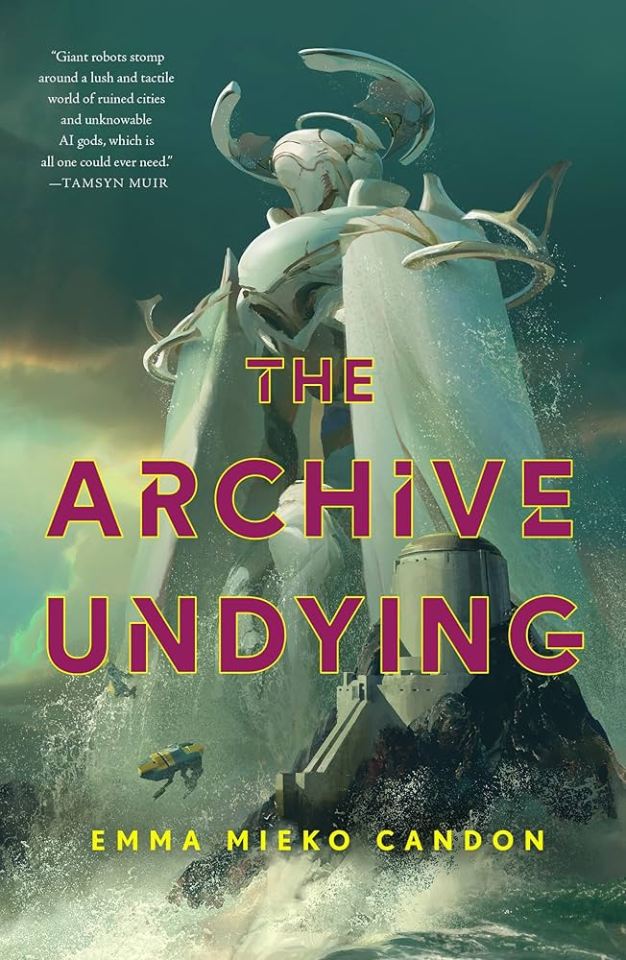
Okay, I will say upfront that this book is not for everyone, but it was absolutely for me. It's one of those sci-fi novels that throws you into the middle of the story and immediately starts throwing terminology and names and you and expects you to figure it out. I was about 1 third/halfway through before I figured out what the plot was. But the world and the characters sucked me in quickly and I ended up adoring this book. It's such a unique experience. But again, I can absolutely see people bouncing right off of it and I would not blame them.
Number 2: The Spirit Bares Its Teeth

I rarely if ever read YA these days, most of just has the...I don't know how to describe it, the "modern YA feel" y'know? And then this book came along and hit me like a bus. This is YA in the way that Speak is YA, a brutally honest acknowledgment that Shit Can Happen when you're a kid and how important it is to talk about it. A WAY more effective horror story than the adult horror one I read this year (which went straight to the "meh' pile). And in lieu of a plot summary, I can just give the content warning list which will basically tell you what the book's about: transphobia, ableism, medical abuse, sexual abuse, sexism, domestic abuse, teen pregnancy, aaand that's all I can remember off the top of my head. If I missed any, let me know.
Number 3: The Locked Tomb Series

Yes I am very late to the party here. I don't have much to add except that they are indeed very good. Would recommend.
Number 4: The Saint of Bright Doors
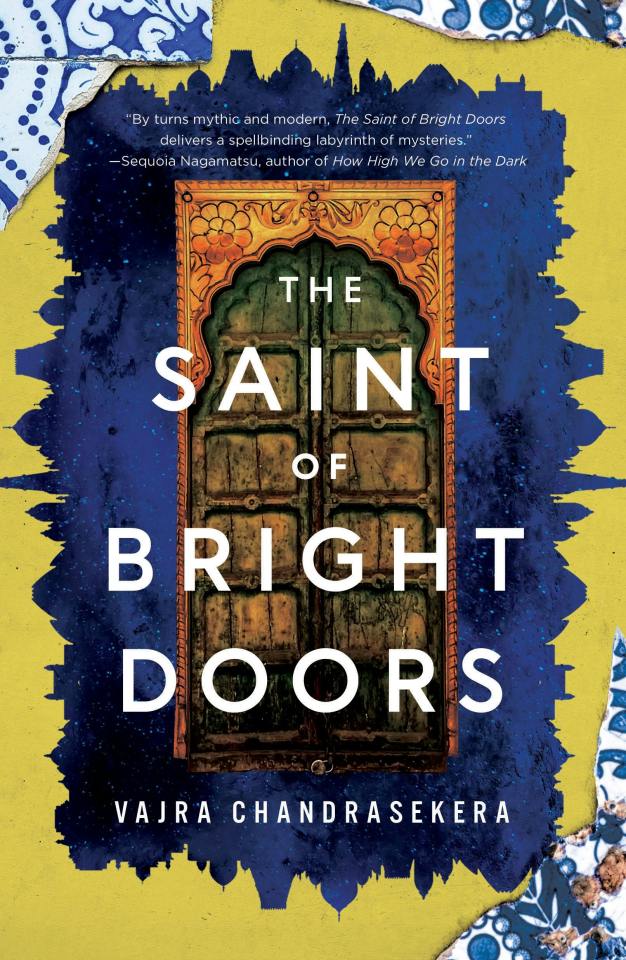
This was like the first book I read this year and I almost forgot about it lol. Which would've been a shame, because it's really good! It draws heavily on Indian culture and history to create a really unique world and plot. Also has one of the best uses of switching from third person the first person narration to pull the rug out from under you that I've seen. Had a great time with it, give it a look!
Number 5: August Kitko and the Mechas From Space

This was such a fun read. Giant mechas that defect from their invasion force and communicate through music and pick up musicians for pilots to help save humanity??? Like, yes??? Please??? Had a blast with this. Needs an anime.
Honorable mentions to In the Lives of Puppets and Emily Wilde's Book of Fairies, and worth checking out.
NON-FICTION
Number 1: The Deviant's War

Also known as the book I would not stop talking about and recommending to people all year. The history of the beginning of the gay rights movement in the US during the 50s/60s, largely centered on activist Frank Kameny. Details how the early activists organized marches, fought the courts, and lobbied with government officials in order to gain basic legal rights. A must-read, imo.
Number 2: Pathogenesis
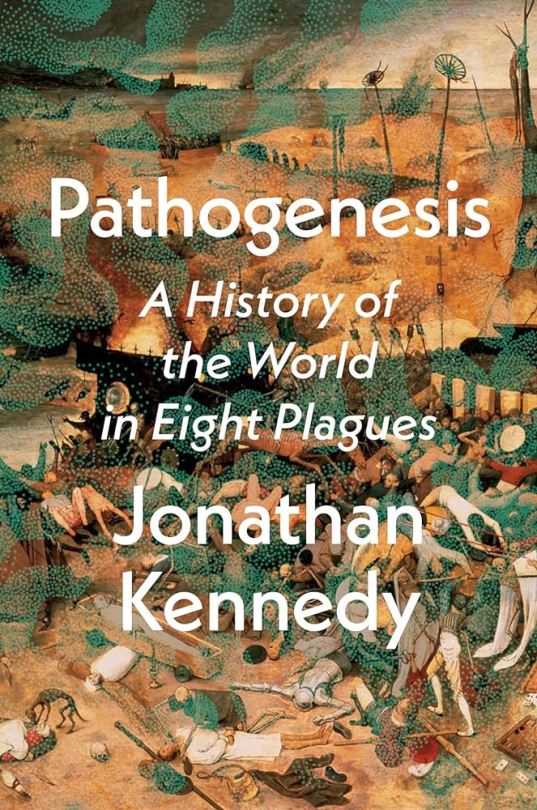
Sounds morbid, and it is, but man this book is good. Detail how much of human history was dependent on the humble microbe. Just. Really hammers in how not-special humanity (particularly western culture) is. Like, no, you were not inherently superior to the other humans. You got their diseases and they got yours. Congratulations, you're both vomiting.
Number 3: Hijab Butch Blues
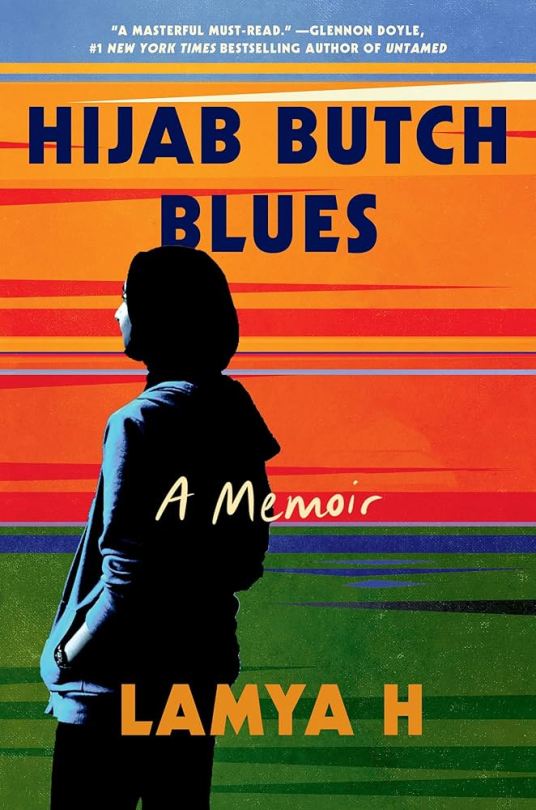
Another late to the party book. But. God. Sometimes you read a book and see parts of yourself reflected back at you and you feel Seen. The way the author describes grappling with religion and gender/sexuality made me have to lie down and stare at the wall for a while. Great existential crisis, would recommend.
Number 4: Kingdom of Characters
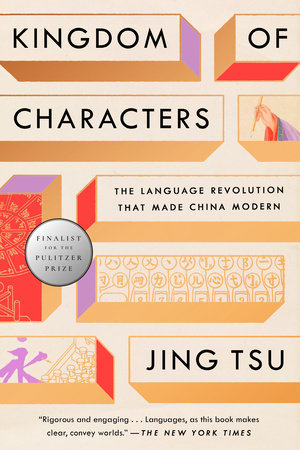
Another book I ready early in the year and loved. A book about the agony and the ecstasy of trying to wrangle Chinese into modern communication methods. Weaving together the more recent history of China with the attempts to adapt the characters into a typewriter, into morse code, into a computer keyboard, etc. Through political and cultural upheaval, linguists just trying to keep communication alive.
Number 5: A Union Like Ours
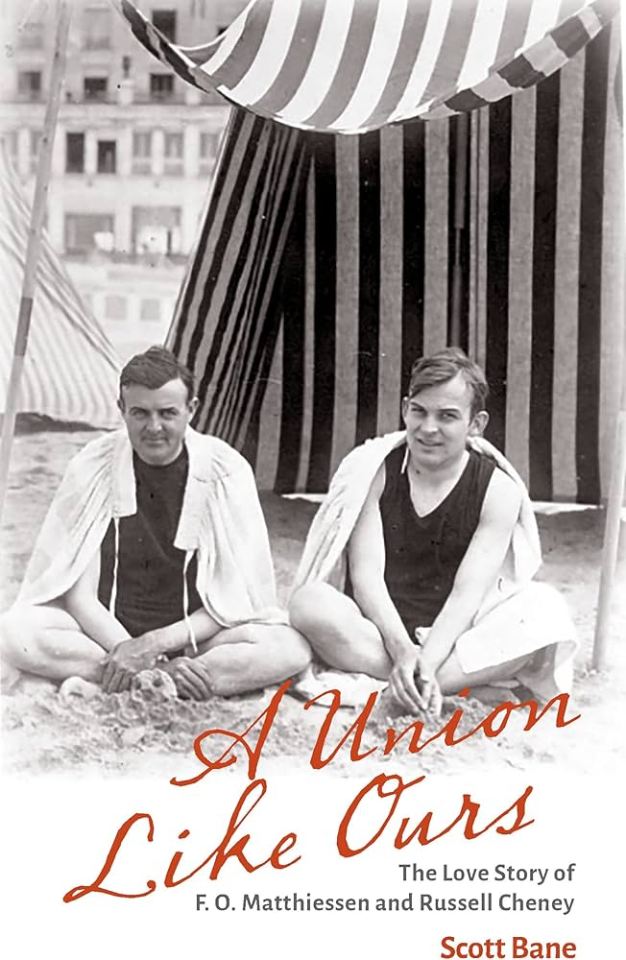
A reminder that, even in adverse conditions, queer people have still found happiness. A both sweet and sad story of two men who managed to make a life together in the 1920s-1940s. Staying together through alcoholism, family disapproval, job changes, and needing to hide their relationship from the wider world, only ending when one died. What really had me nearly crying at work while listening to the audiobook was the discussion of how the surviving partner ultimately committed suicide in the 1950s, and how he could have lived to see the gay rights movement begin to take off. So, keep living, guys.
Honorable mentions: the Disappearing Spoon and Before We Were Trans.
Aaaaand that's all I got. Happy new year, hope it's a better reading year for me.
1 note
·
View note
Text
4. Super Celestials Creating Human
Xuefeng (Translated by Conglong)
In order to demonstrate its power,under the permission of the Greatest Creator, 4.5 billion years ago, Jesus led hundreds of millions celestials start the “project” of creating solar system. They first created the earth,then the sun and other planets in the solar system. They made very careful calculation and design on the size, position, rotary speed of the sun and the earth. After that, Jesus sent near one hundred million celestials come to the earth with the identity of intelligent beings, they started large scale of creation on the earth; the water, air, and most green vegetation and grazing animals are the creations of those celestials, microbes were self-created as the result of water and photosynthesis. This process, from beginning to the end, lasted for nearly 2.3 billion years.
Before animals were created, there was no moon. When the first group of animals were created, celestials found that if they left earth, animals could not survive without ebb and flow, wind,cloud, rain and snow. Therefore, they built two big smelters at places not far from where is now Cairo, Egypt and the Atlantis (it is now located at the bottom of the Atlantic ocean), and made many airships (UFO) using the special smelted metals. And sent the animals they created to everywhere on the earth. At the mean time, they used these airships to transport smelted metals to a “space station”.??They then created a huge hollow ball with a rough surface, silver and reflecting. This huge ball is the moon we refer to today. One billion years ago, the night on the earth was very bright. Later, because the dust from universe continuously dropped on the moon,it was no longer as bright as before.
The UFOs we occasionally saw are not from outer space, they are from the center of the moon, which is a huge warehouse. It stores many “tools” which had been used by celestials; UFO is also one of the “tools”. There is a door on the moon; it can be opened at anytime. There is a giant “palace” under the mysterious Bermuda Triangle; that is the temporary “lodge” for the visiting celestials. Celestials can remotely control UFOs in the warehouse of the moon to monitor the earth according to their needs.
The earth of two hundred millions years ago was very beautiful and prosperous. The place where Sahara Desert currently is located had many green mountains and a dense growth of green trees, birds were twittering, flowers were blossoming, it was once the most beautiful places for green plants and animals. Celestials used to love singing, dancing and playing on the earth, and they were so enjoying it and almost forgot their home.
Unfortunately, the happy scene didn’t last long. The happiness of celestials provoked the anger of Satan. In order to show that he had superior power, he sent another group of Buddhas to the earth two hundred and fifty million years ago, and started to create flies, mosquitoes, bugs, rats, scorpions, centipedes, snakes and predators in large scale to let these animals fight with the creations of celestials. Moreover, they even appeared in the form of dinosaur, destroyed the plants and animals all over the world out of jealousy.
This inharmonious situation made the Greatest Creator very sad.??At about one hundred and thirty million years ago, he destroyed all dinosaurs by applying one kind of plague, and put all their souls in the prison of “The Cathode Black Hole”.??Unfortunately, there were a pair of smart dinosaur hid under the bottom of East China Sea and were able to survive, they kept dormant under water for nearly one hundred million years.
In about 1,600,000 years ago, in order not to let the earth become idle, the Greatest Creator designed a life structure himself, which is the draft version of current humans. He then gave the “design paper” to Jesus and let him to implement. The helpers of Jesus, celestials, started to make new lives according to this design. In order to receive the energy of the Greatest Creator sending from the universe, also to accumulate energy for creating this special new life and speed up the process, they built many laboratories in the place where now is Egypt. These “laboratories” are exactly the well-known pyramids of Egypt. Because of the lack of experience and some steps were missed, the first lives they made were monkeys, and then after were apes, of course, this wouldn’t please the Greatest Creator, so they continued testing and making. The first group of human they successfully made are the black men in Africa, and the second group are native Indians in America, the third are the white men in Europe, Egypt and North Africa. When they finished producing three groups of human, they started to evacuate, and in order to avoid Satan creating difficulties again, they destroyed everything around the Pyramids before they left, which is also why Sahara is a desert today.
But, where do most people in Middle East come from except Egyptian? They are the descendants of Adam and Eve as what says in Bible, they were created by another god. This god knew that his “rival” started to create humans on earth. He created a secret garden of “Eden” in about 7,000 years ago at Jerusalem, and made Adam and Eve, after they were created, he destroyed the“Eden” to avoid the attention of his “rival”.
This is why Cain was afraid that “everyone that findeth me shall slay me”. Who was he afraid of? The humans created by another god.
This is why his god still protected him even Cain killed his brother. (whosoever slayeth Cain, vengeance shall be taken on him sevenfold) So today’s conflicts between Israelite and Palestinian are actually the conflicts between brothers and are family affairs.
And let’s now talk about East Asian and Southeast Asian, they were not created by any god at all, they were the embodiments of dinosaur. At about 7500 years ago, when the pair of dinosaur knew that celestials created human on the earth, they sneaked from the sea, and changed into human form, started to propagate along the Yellow River, and the descendants gradually spread all over Asia. One of the groups went upwards, crossed the Pamirs to India; they want to mingle with the descendants of Adam and Eve to avoid the punishment of the Greatest Creator again.
This is why Chinese people always say, “China is the hometown of dragon, and Chinese are the descendants of dragon.”
This is also why Buddhism originated from India, but blossomed in East Asia and Southeast Asia.??Why it didn’t become popular in India?
The ancestors of Sakyamuniwent to India from Yellow River, when they arrived at India, they found that their consciousness was not compatible with that of the descendants of Adam and Eve, and had to find new home. Because in their subconsciousness, there’s a very deep call, that is to “go home”, which home? The “Elysium” before they came to earth.
Sakyamuni found he came from Elysium after his enlightenment. Although he had a blurry picture of his home, he still remembered something. Once this subconsciouness was awaken, he decided to be engaged in the cause of preaching to other descendants; and shifted the focus to the East led by of his subconsciousness. That’s also why Bodhidharma came to China to preach Buddhism.
Because Indian people were designed by a different creator, they were reluctant to accept the theory of Buddhism because of the absence of the memory in their subconsciousness.??That’s also why although Buddhists had made great efforts, it still failed in India. However, in East and Southeast Asia, people had the instinct sense of the existence of other dimensional spaces, it is quite easy for them to resonate with the theory of Buddhism. Once they accept it, it is rooted and lingers in their mind.
The state “vague and intangible”which Taoism pursues and the “Elysium world” Buddhism pursues are something rooted in the subconsciousness of the yellow race, they feel and believe the existence of the space that is hard to explain. In fact, the space where the ellow race yearning for is the place where the dinosaur had lived in “Ten-thousandyear world” and “Elysium world”. Therefore, even after ten million years, the message is still embedded in the genetic structure of the yellow men.
East and Southeast Asian tend to cultivate “Buhhda” and “Celestial”, it is driven by their inner voice. Although some people accept the theory of Bible, it is not an acceptance out of their heart, but a rational act. People of other races are very easy to believe in God, but quite reluctant to accept Buddhism and Taoism, some people might believe in Buddhism and Taoism, but it is just a blind pursuit of mysterious phenomena, they are impossible to reach the state of “resonance of soul”.
Then, what is the truth of the Great Flood in Noah’s time?
First, I want to explain something: before the Great Flood, human beings had been through extinction already. The humans created 16,000,000 years ago were very strong and tall,they were cruel and very aggressive, they maltreated animals and were very greedy, they didn’t even respect the Greatest Creator, not to mention gods and buddhas.??The city of Maya, ancient Egypt and Atlantis were their activity centers. They had the power of god, buhhda and celestial but were lack of their virtue, they always went to “Ten-thousand year world” and “Elysium world” to make troubles, and did whatever they wanted to do, which had become a big threat to the order of the universe. Finally, the Greatest Creator had to order some gods destroy the city of Maya, ancient Egypt and Atlantis in one night, only left some weak and less intelligent humans on the earth to continue the propagation of the human species.
In order to comfort these men, the Greatest Creator created another planet which is even more beautiful, 960 light years from the earth, it is the “Thousand-year world”. The Greatest Creator told these people, if they behave well and don’t make trouble, they would be able to go to “Thousand-year world” to enjoy happier life after death.??However, these humans started to forget the warning when the population grew to large numbers and its civilization advanced; they began to ignore the Greatest Creator and thought he was nothing special!
At about 4700 years ago, humans on the earth thought that they were able to manage the earth themselves without the help of the Greatest Creator and gods. They ignored their teachings, and insisted their own will. Their pursuit of physical and material comfort far exceeded the pursuit of spiritual growth, which had caused moral degeneracy and the advancement of brute; it strongly destroyed the harmonious atmosphere of the earth. Moreover,the two gods managing the earth had different ethics, thus fought with each other, which made the Greatest Creator so angry that he turned around the earth’s dip angle, huge storms poured down; it lasted for forty days and nights, and drowned most humans and animals, the evil act of humans were then curbed.
But after the Great Flood, Noah’s family were not the only men survived, there were survivors all over the world. This can be verified in many Chinese historical records; the story of “Dayu flood control” is a hard fact. There is also detailed narration in the legends of the Indian tribe Mandan, North Dakota, America.
This is the outline of the origin of human beings.
生命禅院英文网站:http://www.lifechanyuan.org 生命绿洲英文网站:http://newoasisforlife.org 生命禅院国际大家庭:http://www.smcyinternationalfamily.org
0 notes
Text
Why the Europa Clipper Mission Is Important: It's Not What You Think
Today I went on Tumblr and it was just one bad take after another, on a whole range of topics. One of these was a post about how you should familiarize yourselves with the conventions of the science fiction genre before writing sci-fi yourself, so that you don't end up writing "non-sci-fi in space."
That's a bad take. Well, unless your goal is the most mainstream, pulpiest, most conventional and unthreatening kind of fiction. But if you're genuinely interested in science fiction, then you already have something in your head about what that means, and you should go for it. The genre conventions don't matter and frankly I find them more often a homogenizing hindrance to compelling and original storytelling.
One of the most foundational sci-fi genre conventions that I most thoroughly and routinely eschew is the idea of humanity spreading out through the Galaxy on Earthlike worlds. I think that's a terrible idea. I think Earthlike worlds are the worst places in the Universe we could colonize. And my objection is right there in the premise.
We don't know, yet, if life exists outside of Earth. In my opinion, it seems overwhelmingly likely, almost to the point of being inevitable. But what isn't inevitable, I think, is the full breadth of the diversity of life in general strongly overlapping with the diversity of life on Earth specifically. There may be all kinds of possible life forms beyond anything that has ever existed on Earth. I would even say that that's the safe bet. If life exists at all, Earth's already-vast array of life is probably only a small piece of what is physically possible. And that's just talking about life as we know it; never mind the more fanciful possibilities outside that.
Wherever humans physically go, we will take terrestrial microbes with us. Those microbes will then be unleashed into the environments we visit. There is no practical way of preventing or containing this. Life, precious though it is in one sense, is also a form of geoaccumlative garbage. Once introduced into an environment, it is basically a permanent contaminant. The very same resiliency that makes life so noble and persistent in one sense makes it a pernicious form of pollution in another sense.
The spreading of terrestrial microbes in the course of human space travel is therefore akin to traveling with radioactive materials and spraying them into the environment of any place we visit. Arguably, it's even worse than radioactive contamination, because life, unlike radiation, is inherently competitive and has evolved survival strategy to persist in its environment.
The prospect of native life, and its nature, is a giant unknown. It is filled with unknown unknowns, and may hold insights and answers that we don't even know we're looking for yet, let alone ones that we are keenly seeking. Additionally, I think life is valuable in its own right and that the balance of ecosystems should be recognized as a part of "life" for the purposes of environmental conservation.
Moreover, if we're not careful, terrestrial life could hinder or even completely destroy our efforts to study the xenobiology of the Galaxy. Terrestrial microbes could contaminate the biological record of other celestial bodies, potentially making it hard or impossible for us to tell apart terrestrial life from extraterrestrial life.
I am of the opinion, therefore, that anyplace which might realistically harbor life should be off-limits to humans until it is determined with a reasonably high degree of confidence that no life exists there.
In the real world, in the near-term future, with important implications, this points to destinations like Mars as ones that we should be very careful about sending people to, because there is a significant chance that life exists on Mars right now, and a significantly higher chance that it existed in the past. Both our knowledge of the history of life on Mars, and the independence and survival of any hypothetical life that may still exist there, would potentially be existentially endangered by human travel there.
In science fiction, the concept of "Earthlike worlds" takes this premise and turns it up to eleven. These are the places we should most strenuously avoid, until such time—if it ever comes—that we can learn how to visit or potentially even coexist in a manner that isn't literally genocidal.
This is how I do it in my sci-fi series Galaxy Federal. In the distant future, humanity has spanned the entire Galaxy, but we build our colonies from scratch, either by terraforming or otherwise building habitats on lifeless worlds and asteroids or by constructing new artificial habitats in space from raw material.
In Galaxy Federal, simple life exists quite commonly throughout the Galaxy, and for the most part these places are prohibited from human development or even human visitation (except in sterile bodies, which is a topic for another day)—and nowhere more so than the sanctuary worlds that are teeming with alien life.
These places, we leave alone.
I think it is inevitable that humanity, if it does become a spacefaring civilization, will eventually reach this conclusion. But probably not before devastating the native life on many worlds beforehand.
But who is to say for sure? Today, the Europa Clipper launched. For my money, this is the most exciting and important NASA mission since Curiosity, and one of the most important NASA missions ever. This probe is going to analyze the moon Europa for signs of life. NASA nerds, at least, are keenly aware of the issues I have been explaining here, an awareness which coexists alongside their broader curiosity to learn about other worlds and hopefully discover life for the sheer thrill of it. So maybe wiser minds will prevail. Interplanetary space travel is not going to be accessible to ordinary people for the foreseeable future, so it will be easier than it otherwise would for governments to proactively prevent the biocontamination of alien worlds with terrestrial microbes. I trust NASA to do the right thing, but I am more concerned about rogue governments and the interests of private capital.
It is a well-worn sci-fi trope when our human heroes contract some weird space virus, or get attacked by hostile aliens, etc. Much rarer is the same threat in the opposite direction: We need to be careful about where we set foot. If it were just human beings, it wouldn't be a problem so much, because we can control that. And this is why it isn't a problem to send uncrewed probes and landers and rovers and so forth. But wherever human bodies go, we carry with us an empire of germs, and that's a dangerous sidearm for anyone who comes in peace.
I hope we do find alien life out there: weird space moss, and purple grasses, and starfish the size of airplanes, and so much more. And, one day, I hope humanity will be able to dwell safely alongside these wonders.
But we're not there yet. And, as with all exploration, many of the things we accidentally ruin are unique and will remain ruined forever no matter how much we moderate our policies afterward. The fate of entire species—of entire worlds of species—potentially hangs in the balance of humanity's human space exploration policies.
1 note
·
View note
Photo

Name: Aram’zdos(Ar-Am-Zous) Place of Origin: Venus Stomping Grounds: Pacific West, various volcanic locations Height: 150 feet Length 200 feet Biology: Another strange inhabitant of the strange alien world of Venus, Aram’zdos is a beast that exhibits the same strange biomechanic nature that seems to flourish on the hellscape planet. This particular organism, Aram’zdos, takes what is known of Venusian life(Or kaiju at least) and adopts an extreme way of life of extreme excavation to live deep in the scorching heat beneath the planet’s surface where it often grazes on volcanic chemicals such as pure sulfur, sulfure and hydrogen respirating microb matts and other such sources of chemicals it can upturn. Also will occasionally prey upon other large organisms, but rarely.
The head and back extend out like a series of shovel spades to split rock and dirt, the central arm often acts as a giant backhoe to heave mountains of rock and dirt, the two main arms rotate as massive trenchers, an addition back pair of studded wheel-like structures to act as wheels, and the two legs familiar that face backwards act as a pair of arms with opposable digits to grip and push dirt so that Aram’zdos can continue plowing forward without needing to turn around. The mouth is neatly tucked between the arm and upper maxima, hidden away to avoid having dirt fill its feeding orifice.
Venusian Power Super Strength Enhanced Healing Factor Immunity to Radiation Acid Spit Extremophile Strange Venusian Organs Organic Mega Machine
Personality Aram’Zdos is a reclusive kaiju most of the time who usually does not appreciate unwelcome visitors to its mounds and tunnels. The beast is immensely defensive of its home and will see off anyone that it perceives as a threat be it human or giant monster, that is until one makes their intentions and motives clear. Some have compared it to that of a eusocial insect mixed with that of a great ape, for while Aram’Zdos will quite literally heave a mountain at an invader, it welcomes in those who have respected its property lines.
Kaiju that have stopped at the edge of its territory and waited to be approached have been invited in have been seen to with what can be described as polite etiquette by Aram’zDos, showing a level of intelligence and sophistication not unlike seem in humans, and certainly more than most other Kaiju contemporaries. It’s even been suspected that Aram’Dos may be one of Venus’s dominant specie(s) to explain its civilized mannerisms. Aram’Zdos recognizes hard effort physically, and has strong respect for other creatures who put hard work into their building or other creations as complex as bright colors being mixed and arranged into patterns, to which Aram’Zdos also seems to be attracted to vividly colored rock and earth. Like many Kaiju, it also appreciates a good fight from a rough wrestle to a fight with intention to kill.
History It all began in 1954 when alien beasts began falling from the sky and landing on earth, before the Beyonder’s attempted to usurp Earth from mankind and its giant, natural fauna deep inside the Earth Hollows. One such alien craft landed far in the desert of Nevada, but this craft would not be found in one piece. Its owner, a very ornery Venusian Kaiju, tore its way free before it even touched down and landed somewhere in Montana instead. The creature is shy as it is highly territorial. Most of the time it remained underground, only its massive hand over snaking out to the surface usually to investigate with touch. Any attempt to approach it resulted in said hand crushing any vehicles like empty soda cans. The individual roamed and burrowed its way through several US states all the way until after the Beyonder’s were driven from Earth, to which itself had a hand in when the Beyonders attempted to capture and/or destroy it to get it out of the way. After that, it returned right back to upheaving the western plains until captured and relocated shortly after to a more homely location to a highly volcanic Kaiju Sanctuary. There, it would find a well suited place to set up its home and found friends and enemies alike. ------------ For @tyrantisterror contest in celebration of his new book! I had intentions to make a new Venusian monster for ages. So happy I got to.
16 notes
·
View notes
Text
Deep Water
tw: blood, death
The murky depths of the ocean reveal nothing but curiosity hidden within them. Their craft was safe, they were told, under any depth in the ocean. Yet with every creak of the hull they felt more and more nervous. The abyss was not as calming as they had hoped. They were far too deep for the sun to shine. Science has never seen anything this deep, is it even possible? Maybe microbes, but surely nothing large could survive at this pressure, it'd surely be crushed. Right?
Their uncertain thoughts halted when they saw something move. They could've sworn a shadow had just swam past. No, it must be their mind playing tricks on them. Nothing could survive at these depths. The pressure would surely crush anything large for them to see. Thousands of pounds of pressure cause the metal walls around them to creak as they descend further. They're only a few hundred meters from the bottom. The deepest point on the planet.
They look out the window curiously, the lights from their submarine shining into the murky emptiness of the bottom of the ocean. As the ocean floor begins to come into their view, something begins to cast a shadow in the light. What's that on the rocky floor? As the submarine settles only centimeters from the bottom, they begin to touch the controls. The walls creak as they attempt to move forward. They aren't sure if the pressure will let them move, but they can't think about that. They can't think of the possibility that they won't make it to the surface. The shadow grows larger, too large. It must be a rock.
Of course it isn't a rock. It's a skull. A gigantic skull of some creature. They can't tell what it is from this distance, but something that size is surely a whale. It could've sunk here after death. But how did the pressure not crush the skeleton? Something moves in the light, causing them to jolt harshly. The skull shifts, as if bumped, while the shadow seems to move above their view. Something big definitely just moved.
They scramble to check the cameras, turning away from the window to check every angle around the sub. Nothing reveals itself to them. No movement, no visual. Just the cold emptiness of the bottom of the ocean. They take a shaky breath as they check every camera they can. It feels like hours before they slump in their seat, staring at an empty screen. Must've been their imagination. Surely nothing could survive down here. They turn back towards the window, and they're met with a menacing set of twelve giant bioluminescent eyes. They scream as they jolt away from the window. The submarine doesn't offer much room to move, and nowhere to hide. The eyes blink, one by one. No less than eight watch them at any given time. They feel the sides of the submarine vibrate as the creature lets out a noise. They cover their ears as the sound becomes deafening. Much louder than any whale they've ever heard.
The creature begins to circle the sub, or maybe it always was, but now they can actually see it. They shakily turn back towards the camera screens, trying to see the size of this creature. It's much more colorful than they thought. The eyes may be blue, but the side of the creature shows bioluminescent streaks of every color imaginable. It seems like the creature can turn the luminescence on and off at will, as each color pulses on and off in a slow, steady pattern.
They blink, and the creature is gone. They don't see it on the cameras anymore. How did someone so large just disappear. And why did their head hurt? They look through the window again, and take a shaky breath as they watch the giant skull move again. The skull, they realize, is much larger than the creature. It has to be. They can see eye sockets in the same pattern, and the skull is almost twice as large. How big do these creatures get? The shiver down their spine begs them to return to the surface, but they can't leave such a discovery undocumented! They try to move their sub closer, only to be stopped by another shadow. A faster shadow.
In an instant something latches onto the window. Something with a large mouth, and terrifying sharp teeth. An eel-like monstrosity the size of a train stares them down. It beats its head against the submarine violently, quickly. Each movement is erratic, panicked. Then the water turns a bioluminescent green. That must be the creature's blood. Something else dragged it away. They can see a trail of green cloud the water. They should surface now.
They try to maneuver the submarine to the surface. This discovery is worthless if they die. The fear of dying before they make it brings them to tears, but they can't break down yet. As the submarine moves upwards, they see something swim past. Not a shadow, no they could see the color this time. A swarm of some sort. Large, shark-sized fish begin to swim past at incredible speed. The fact that these are the smallest creatures they've seen so far scares them. They begin to cry quietly as they make their way up. One of the members of the swarm swims close enough for them to see its face, if only for a moment. Those teeth, another carnivore, must be. It looked like a creature of nightmares. Jagged teeth grow so long it can hardly close its mouth. And they don't want to know what caused those scars.
They feel like they upset something, seeing all of this activity. Their curiosity might just get them killed. They gasp as they hear a thud against the sub. A loud thud, did one of those schooling fish run into them? But the swarm had passed by. They turn to the camera to see those eyes. Those menacing eyes staring right at them. They wince as the creature gets closer, revealing a giant mouth, filled with razor sharp teeth. It's eyes pulsate in a pattern as they watch in terror. Then they blink, and the creature is gone, once again. They rub their aching head before looking out the window.
Sunlight? It should've been hours before they saw sunlight again. They call on their radio, asking for help as tears roll down their cheeks. They ask for confirmation that their partners on the surface can hear them. No response. They're sick of the isolation. It's been hours, this is ridiculous. After a slow journey, they finally begin to see the surface of the water, and the boat they were researching on. As they surface they immediately open the top hatch to let in some fresh air. They peek their head out at the nearby boat. It's a fairly large boat, so they can't see the deck, but they should've seen them surface. They maneuver their submarine right beside the boat carefully. No way they're getting in the water after what they've seen, even if it's irrational.
As they climb on deck they're met with a coppery, rotten smell. Is anyone here? The boat seems abandoned. They frown as they make their way to the bridge quickly, ready to shout at anyone there. But nobody's in the bridge. It's shockingly empty, besides that coppery, rotten scent. They take another shaky breath and make their way below deck. Whoever's pulling this prank is in for trouble. But they freeze when they see blood in the hallway. A lot of blood. Like someone was torn open with claws, or teeth. They quickly make their way through the halls, now looking for something to defend themselves with. A knife, anything. The halls become more and more covered in blood, and the smell of blood begins to permeate the air. Their panic begins to rise as they rush towards their cabin. Something meets them inside. Something inhuman. They freeze as they see the humanoid figure standing over a disemboweled corpse. The corpse hardly looks human anymore from the damage, but the blood gives it away.
The humanoid stands, unmoving, not breathing, watching them. Then, its body begins to glow. The same bioluminescent pattern as the giant below. Their eyes widen as their jaw hangs open in shock. Then they blink, and they find themselves eviscerated, gasping for air. The life slowly fades from their eyes, tears rolling down their cheeks. The last thing they see are the beautiful colors.
#flaredarkstormwriting#original writing#original content#horror#ocean#creature#creative#creepypasta#deep ocean#submarine#requests open#nobody will see this but...
15 notes
·
View notes
Text

This thread was a response to questions about how to build soil. I look at the big picture what helps soil grow & end with a discussions about how towns & cities might be designed to help.
So there’s so much to cover in how to repair things. I’m going to do a slow thread on how the designed and built environment can be directed to soil building and climate repair.
1st thing to think about is what is soil? For brevity i’m going to say soil is the culturing of weathered rock with a food web of microorganisms that leads to making rock nutrients solvable &stores them along with organic carbon. (Soil scientists i know i’m over-simplifying)
I’m talking about aerobic souls formed with oxygen rather than anaerobic. Wetlands souls are amazing and do good. But there are reasons to focus in aerobic for now. (I’m a huge fan of wetlands and pond systems too)
Too much water and too much compaction removes oxygen. The system switches to anaerobes that live by yanking Oxygen off of soil nutrients, making them smell bad and able to leave the soil. They also produce alcohols that prevent plant roots from growing.
So this kind of soil needs: enough air, water, contact with plants (that feed it with sugars and proteins made with photosynthesis and CO2 exuded from their roots.)
Rock weathers into subsoil without a lot of big life, when plants interact with it they build living subsoil through their roots and the accumulation of organic matter on top.

Living soil is protective. So it actually protects the subsoil from some of the processes that speed up formation. Which is why in natural conditions it can settle into a very slow rate of production.
We have been running civilizations in the use of this built up soil. Turning it killing fungi and structure to get bacterial blooms that feed out Annual crops.
This leads to Erosion rates more similar to mountain systems then the low lands where the soil formed. We are burning through our soil to grow and crash quite a few civs
You have to understand. The buffering capacity of our plants souls* could have handled the CO2 from fossil fuels. Only what we used fossil fuels for was to increase erosion, change the balance of water runoff, deforest, and plow over the grasslands every April. 8/?
*Sorry about the autocorrect to soul. Lol
I have to be off-line for a spell but I’ll continue with a discussion about how we design to accelerate that soil building process. Including some references in case studies
So i want to introduce a few puzzle pieces. The first is the work of this man PA Yeomans. He was a mining geologist who retired and starting thinking about soil care from a Geomorphologist POV

When he set off to tend his land, the Australian gov provided soil conservation literature focused on contour plowing. Based on the view that soil is precious(it is) but that it’s impossible to speed its production (it’s not)
The main problems with contour based design can be seen from this image by PA. On land contours are not parallel. This slows water but it drains ridges and concentrates water in valleys. Overdrying and overwriting soil at the same time. Can even blow out.
PA developed a way of understanding topographic features to organize landscapes so that: water is infiltrated, spread, extra collected stored as high as possible to re-hydrate during dry times. He realized this could be used to organize everything on broad acre farmland
This prob is too dense for Twitter. But imagine land as big ridges between streams and they have smaller ridges and valleys. Imagine the inflection point in those smaller valleys where the land nicks in like a clavicle * in the pic 13/
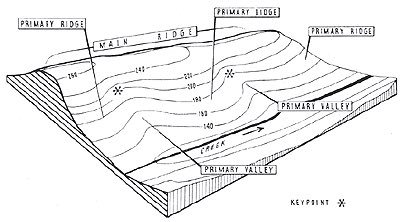
PA called them keyponts and they are : the highest water concentrating point in land, where soils thicken, & any line parallel to this on the land concentrated water above but spreads water below
Now he had a way to organize features. First he placed ponds at those points. Collection drains could be set to collect overland flow and move it into those ponds. Then any roads could follow those drains with minimal impact actually helping water collection.
And bellow, the land could be plowed with a subsoiler that sharpers the subsoil without turning the soil. And he would plow down on ridges and up on valleys which means water spreads.
PAs land:

And here in red are plow lines (or how to organize and water receiving element such as tree rows to spread water along ridges)

Roads, buildings, pasture, agroforestry- whatever could be designed. Roads can also be placed along ridges, Trees get planted along ridges & in valleys and along streams with complete connectivity. And humans move out of valleys to ridges, leaving valleys for soil and wildlife.
This planning process is like adding sourdough starter to flour and sugar and adding just enough water. The subsoil can be reached by water, roots, inoculated by microbes. you can rapidly add feet of topsoil. Keyline farms are amazing. They stop flashy creeks & can repair land
And it should be viewed as appropriate for where people live and farm. Ag land not the giant ranges that could be bison prairies.
So there is more. PAs last book was on how these design methods could be applied to cities and towns. That towns could extend along ridges,roads could direct water into Catchment which could water yards then agricultural & reforested lowlands. He called it “the city forest”
The City Forest by P.A. Yeoman hosted on SoilandHealth.org
Library Rules and Copyright Notice
Think about what this would mean. Human settlements designed so they are collectors of water, human labor, and even humanure, directed towards the generation and care of soils and forestry.
So let’s talk examples. Frederick Law Olmstead designed a number of Stormwater collecting parks Into towns. One of the most famous being Boston’s Emerald Necklace. /24


His son John Charles did something similar when he designed Portland Oregon’s water collecting neighborhood of Lauralhurst. Before the current Stormwater system, Laurelhurst Park was the detention basin.

Next step in the journey Is Davis California in the 80s where Mike Corbett designed village homes a neighborhood designed to handle Stormwater by soaking it in Swales and orchards rather then management systems
https://en.wikipedia.org/wiki/Village_Homes
Here’s a video of Mollison touring the place in the 1990s. https://youtu.be/v_05oRQxssQ I’ve heated that they have managed several very large storm events that flooded their neighbors. All while building the soil and restoring the water table.
Village Homes with Bill Mollison (improved audio)
So:,remember this and this question: what if we really looked for a city that took this approach?
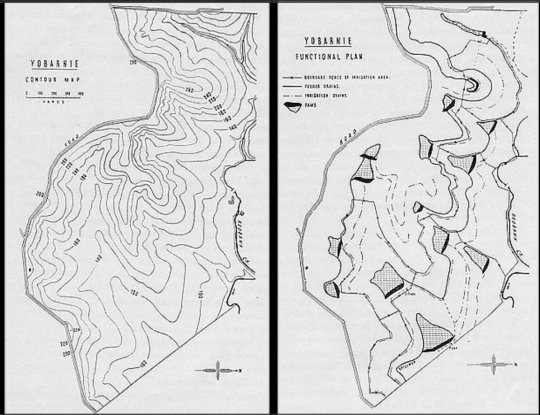

Well, here's Siena Italy which started as a number of little settlements and converged in the hills of Tuscany: that big public square is the Piaza Del Campo- built in the key point of the landscape, The roads collect water into drains and reservoirs under the piazzas.

Link to tweet with 3 Images here
28/ if you look at the landscape you see how this hilltown stayed on the uplands and collected water to irrigate the lowlands.

Link to tweet with 4 Images here
Underground passages for water, the 'fountain of the earth' sits at the keypoint, and the lowland valleys are irrigated and saved for soil...

Link to tweet with 2 Images here
more images of siena form GIS models im building

Link to Tweet with 12 Images here
#keyline design#regenerative agriculture#sustainable design#buildsoil#water retention#erosion control#Yeomans#soil health
13 notes
·
View notes
Text
TAFAKKUR: Part 415
THE SECRET OF VITALITY IN THE SOIL: Part 1
And a sign for them is the earth that is dead:
We give it life and We bring forth from it grain, so from it they eat.(36.33)
There are a number of points in this verse which can bear explication from a scientific view-point.
1-Use of the expression dead ‘earth’ (rather than dead ‘soil’), indicates that the soil of the whole earth is implied.
2- One meaning of ‘for them is a sign’ is Divine portent. The occurrence of the phrase at the outset of the verse alerts us to the fact that the verse will encourage us to understand a very important family of natural phenomena.
3-We are informed that in its initial state, the earth was devoid of life. In this way, the lifelines of the earth when it was first created is expressed as a geological fact.
4-We learn that the soil, which appears dead is actually alive. Even this one observation affirms the miracle of wisdom contained in the verse. For it is only a hundred years since it was discovered that there are organisms in the soil, while it is scarcely forty years since the discovery that 80% of soil consists of bacteria, and thus is a community of living organisms.
5-‘We quickened it and brought forth from it habba.’ According to the latter part of the verse, habba signifies seeds of a vegetable nature or, specifically in this context, grain. However, habba in general denotes small, uniform particles, and we shall discuss the verse’s inner meaning also from this angle.
6-The verse declares that life is transferred via the soil to plants and thence to us, a chain of events singularly important from the standpoint of biochemistry. While the verse uses the word habba in the general sense, particularly mentioned is what is eaten from it in the form of vegetable food.
In order to comprehend this verse in all its subtleties, one needs first an up-dated grasp of the concepts of life and vitality as scientists now understand them. For the concept of vitality has changed greatly in recent years, and come closer to its inner truth. The biological knowledge of the past has been left far behind.
Life is a mathematical programme encoded in a giant chemical molecule. The Qur’an indicated this reality, discovered only in recent years, fourteen centuries ago in the statement (80.19): We created him from a drop of liquid; we shaped and programmed him.
Allah first created bacteria which fix nitrogen in the soil. In chemical terms, these bacteria are laboratories of ‘synthesizers’; that is, they take nitrogen from the air and prepare compounds with negative valences. They reduce nitrogen by a method that we still cannot fathom, and convert it into a form in which it can combine with hydrogen. They require water and rain for this purpose–which is why we observe that life springs from the soil when it rains.
A second type of bacteria in the soil is what might be called the ‘analyzers’ after their particular role in the Divine programme. They break down whatever falls to the ground and so prepare the way for the ‘synthesizers’. Excluding water, the greatest part of any quantity of soil is found to be composed of microbes.
In botanic terms, soil is regarded as a totally living structure, and so it has been since the origin of life on earth, which is to say, in a modern scientific idiom, a truth that is directly expressed in the Qur’an.
It is in order to sow confusion in people’s minds that atheists distort the established facts about the emergence of various organisms on this planet. They maintain that all organisms have evolved in a gradual process (with some abrupt leaps) from a single cell, randomly becoming the various plant and animal species we see around us or discover in fossil records. This is the so-called ‘theory of evolution’. But the secret of ‘the Living’, giving life to the soil, as also to plants forming from seeds after the soil has come to life, is diametrically opposed to this theory. What is expressed in the Qur’an can only be the truth while any notion opposing it can only be falsehood.
The theory of evolution was propounded toward the end of the 19th century. As I have just explained, organisms were thought at that time to embody different chemical structures, the smaller organisms having a simpler chemical composition, while a more complex organism had a more complex composition. The mathematical programme within cells was wholly unknown.
An evolution of the most primitive structures could, of course, be conceived but as soon as we wish to understand organisms, distinct living entities, however simple, the assumptions of evolution simply break down. For, as we now know, the differences in the emergence of different organisms resides in the mathematical programming to which they operate. The perfection of these very diverse programmes is not open to question; nor is it possible to speak of evolution among them, as one being somehow ‘later’ than another. Compare, for example, a bile-producing cell in the body and a nitrogen-fixing bacterium of simpler countenance in the soil. Which of them performs the more difficult task? It is not hard to decide the question: chemically, binding nitrogen to hydrogen is undoubtedly the harder task. Again, bacteria are thought to be the most developed sorts of cell, not those which carry and enable human intelligence. While DDT, the notorious insecticide, was wreaking havoc with the environment, the common house-fly, a somewhat despised and lowly creature, developed such a prescription in the fluid of its nerve cells that it proved impossible to exterminate another fly thereafter using DDT. A neuron in the human brain could not produce this prescription and preventative if it were to labor at the task for a thousand years.
Well, now, which cell is the later development? Which is the primitive form and which the more evolved? Of course, man is the most perfect of organisms, but he cannot do anything outside of the programme within which all his life is contained, and, as the Qur’an says, can be defeated even by a fly.
Thus, once the concept of life is examined in depth, it can easily be seen that the theory of evolution is a human fiction. Fish with luminous organs were swimming at the bottom of the ocean millions of years ago, just as, at that time, bats equipped with radar were flying in the dark, whereas we are only now discovering these facts and starting to put them to use.
#allah#god#prophet#Muhammad#quran#ayah#sunnah#hadith#islam#muslim#muslimah#hijab#help#dua#salah#pray#prayer#revert#convert#reminder#religion#welcome to islam#how to convert to islam#new convert#new muslim#new revert#revert help#convert help#islam help#muslim help
4 notes
·
View notes
Text
Toggle’s Law
There was a Tumblr post going around last year that I rather liked. It was tongue in cheek, a joke about applying the Gaia hypothesis to human evolution and concluding that humanity was Gaia’s way of clearing its buildup of subsurface hydrocarbons. Just a fun bit of climate change gallows humor, but it sorta stuck with me.
The Gaia hypothesis as such is more ‘fun story’ than solid science, but in a weaker and more rigorous form it can sometimes get taken fairly seriously. Less “the Earth is a giant organism” and more “feedback mechanisms in a complex biosphere seem to stabilize the system more often than they destabilize it.” Probably you could rephrase the statement in statistical mechanics terms and show how it’s necessary or obvious? But anyway, I started to think about human intelligence in those terms and I think actually it’s somewhat true in an interesting way.
Many of the tools to which we owe civilization (wood, coal, oil) basically come down to a proficiency in finding big reservoirs of complex organic molecules and exploiting the energy gradient. And those reservoirs in turn tend to get big because brains are better at finding those particular reservoirs than is ‘mere’ natural selection. Consider coal. We had a big potential energy source literally just lying around for several hundred million years, which is biology’s favorite thing ever, but it turns out that the easiest way to turn that in to more biology was through the intermediary of intelligence, rather than (as one might naively expect) a super fancy microbe or something.
The other thing that wood, coal, and oil have in common is that they’re biogenic. That is, they have their origin in a biological system. It’s rather fascinating, actually: biogenic, but not bioavailable. There’s an analogy to encryption. It seems that for any given biological process, there’s a nonzero chance that it moves carbon from an ‘accessible’ state to an ‘encrypted’ state that can’t be readily processed back into the larger dynamic ecosystem. Maybe permanently, maybe just a really long wait on evolutionary timescales.
Add these together, and you get the observation that life tends to hide energy from itself on geologic time, creating barriers that are (in some fraction of cases) far more tractable to cognition than they are to natural selection. What’s more, it seems pretty likely that this is a fully general situation. In the spirit of wildly overconfident aristocrat-scholars from the Enlightenment, I’m going to declare this an immutable law of nature and name it after myself. Toggle’s Law may be stated thusly: In a mature biosphere, the marginal utility of intelligence must increase with time.
As usual, all bets are off once civilization kicks in; I kept trying to think of how to incorporate humans into this, but I think it’s worth giving up the generality for the sake of pith. I’m also phrasing it for maximum optimism, emphasizing the ways in which this trend creates pressures towards minds and advanced thinking. The pessimistic version would be more entropic, something like “in a closed biosphere, the fraction of bioavailable nutrients will tend towards zero.” But even in the total absence of higher intelligence, probably that’s slow enough that something else will sterilize your planet first (e.g. the death of your star).
That morbid digression aside, I find Toggle’s Law to be rather cheerful. It’s nice to think about the ways in which the cosmos might be quietly seeding the worlds with little toys and playgrounds, like a patient teacher waiting for its students to finally hit that moment of understanding.
311 notes
·
View notes
Photo

The physicist Freeman Dyson, who has died aged 96, became famous within science for mathematical solutions so advanced that they could only be applied to complex problems of atomic theory and popular with the public for ideas so far-fetched they seemed beyond lunacy.
As a young postgraduate student, Dyson devised – while taking a Greyhound bus ride in America – the answer to a conundrum in quantum electrodynamics that had stumped giants of physics such as Richard Feynman and Hans Bethe. As an author, guru and apostle for science, Dyson also cheerfully proposed that humans might genetically engineer trees that could grow on comets, to provide new habitats for genetically altered humans.
He had already proposed the ultimate solution to the energy crisis: a sufficiently advanced civilisation would, he argued, crunch up all the unused planets and asteroids to form a giant shell around its parent star, to reflect and exploit its radiation. Science fiction writers were delighted. The first suggestion became known as the Dyson tree. The second is called the Dyson sphere.
He was born in Crowthorne, Berkshire. His father, George Dyson, was a musician and composer, and his mother, Mildred Atkey, a lawyer. The young Dyson reported that his happiest ever school holiday – from Winchester college – was spent working his way, from 6am to 10pm, through 700 problems in Piaggio’s Differential Equations. “I intended to speak the language of Einstein,” he said in his 1979 memoir Disturbing the Universe. “I was in love with mathematics and nothing else mattered.”
He graduated from Cambridge and in 1943 became a civilian scientist with RAF Bomber Command, which experienced hideous losses with each raid over Germany. Dyson and his colleagues suggested that the Lancaster bomber’s gun turrets slowed the plane, increased its burden and made it more vulnerable to German fighters: without the turrets, it might gain an extra 50mph and be much more manoeuvrable.
He was ignored. Bomber Command, he was later to write, “might have been invented by a mad scientist as an example to exhibit as clearly as possible the evil aspects of science and technology: the Lancaster, in itself a magnificent flying machine, made into a death trap for the boys who flew it. A huge organisation dedicated to the purpose of burning cities and killing people, and doing it badly.”
The young Dyson was already convinced of some moral purpose to the universe and remained a non-denominational Christian all his life.
After the second world war he went to Cornell University in New York state to begin research in physics under Bethe, one of the team at Los Alamos that fashioned the atomic bomb.
By 1947, the challenge was one of pure science: to forge an accurate theory that described how atoms and electrons behaved when they absorbed or emitted light. The broad basis of what was called quantum electrodynamics had been proposed by the British scientist Paul Dirac and other giants of physics. The next step was to calculate the precise behaviour inside an atom. Using different approaches, both Julian Schwinger and Feynman delivered convincing solutions, but their answers did not quite square with each other.
It was while crossing Nebraska by bus, reading James Joyce and the biography of Pandit Nehru, that the young Dyson saw how to resolve the work of the two men and help win them the 1965 Nobel prize: “It came bursting into my consciousness, like an explosion,” Dyson wrote. “I had no pencil and paper, but everything was so clear I did not need to write it down.”
A few days later he moved – for almost all of the rest of his life – to the Institute of Advanced Study at Princeton, home of Albert Einstein and Robert Oppenheimer, the father of the atomic bomb. “It was exactly a year since I had left England to learn physics from the Americans. And now here I was a year later, walking down the road to the institute on a fine September morning, to teach the great Oppenheimer how to do physics. The whole situation seemed too absurd to be credible,” Dyson wrote later.
He went on to deliver a series of papers that resolved the problems of quantum electrodynamics. He did not share in Feynman’s and Schwinger’s Nobel prize. He did not complain. “I was not inventing new physics,” he said. “I merely clarified what was already there so that others could see the larger picture.”
Dyson tackled complex problems in theoretical physics and mathematics – there is a mathematical tool called the Dyson series, and another called Dyson’s transform – and enjoyed the affection and respect of scientists everywhere. He took US citizenship, and worked on Project Orion, one of America’s oddest and most ambitious space ventures.
Orion was to be an enormous spacecraft, with a crew of 200 scientists and engineers, driven by nuclear weapons: warheads would be ejected one after another from the spaceship and detonated. This repeated pulse of blasts would generate speeds so colossal that the spacecraft could reach Mars in two weeks, and get to Saturn, explore the planet’s moons, and get back to Earth again within seven months. Modern spacecraft launched by chemical rockets can take 12 months to reach Mars, and more than seven years to reach Saturn.
The Orion project faltered under the burden of technical problems, and then was abandoned in 1965 after the partial test ban treaty that outlawed nuclear explosions in space.
Dyson was a widely read man with a gift for memorable remarks and a great talent for presenting – with calm logic and bright language – ideas for which the term “outside the envelope” could only be the most feeble understatement.
In 1960, in a paper for the journal Science, he argued that a technologically advanced civilisation would sooner or later surround its home star with reflective material to make full use of all its radiation. The extraterrestrials could do this by pulverising a planet the size of Jupiter, and spreading its fabric in a thin shell around their star, at twice the distance of the Earth from the sun. Although the starlight would be masked, the shell or sphere would inevitably warm up. So people seeking extraterrestrial intelligence should first look for a very large infrared glow somewhere in the galaxy.
In 1972 – a year before the first serious experiments in manipulating DNA – Dyson outlined, in a Birkbeck College lecture, in London, his vision of biological engineering. He predicted that scavenging microbes could be altered to harvest minerals, neutralise toxins and to clean up plastic litter and hazardous radioactive materials.
He then proposed that comets – lumps of ice and organic chemicals that periodically orbit the sun – could serve as nurseries for genetically altered trees that could grow, in the absence of gravity, to heights of hundreds of miles, and release oxygen from their roots to sustain human life. “Seen from far away, the comet will look like a small potato sprouting an immense growth of stems and foliage. When man comes to live on the comets, he will find himself returning to the arboreal existence of his ancestors,” he told a delighted audience.
He went on to predict robot explorers that could replicate themselves, and plants that would make seeds and propagate across the galaxy. Plants could grow their own greenhouses, he argued, just as turtles could grow shells and polar bears grow fur. His audience may not have believed a word, but they listened intently.
Dyson had a gift for the memorable line and a disarming honesty that admitted the possibility of error. It was, he would say, better to be wrong than to be vague, and much more fun to be contradicted than to be ignored. Dyson was by instinct and reason a pacifist, but he understood the fascination with nuclear weaponry.
He enjoyed unorthodox propositions and contrarian arguments; he maintained a certain scepticism about climate change (“the fuss about global warming is greatly exaggerated”) and he argued that a commercial free-for-all was more likely to deliver the right design for spacecraft than a government-directed effort.
He had little patience with those physicists who argued that the world was the consequence of blind chance. “The more I examine the universe and the details of its architecture, the more evidence I find that the universe must in some sense have known we were coming,” he once said.
His Cambridge mentor, the mathematician GH Hardy, had told him: “Young men should prove theorems, old men should write books.” After Disturbing the Universe, Dyson wrote a number of compelling books, including Infinite in All Directions (1988) and Imagined Worlds (1997). In 2000, he was awarded the Templeton prize – worth more than the Nobel – given annually for progress towards discoveries about spiritual realities.
He was a frequent essayist and to the end a contributor to the New York Review of Books. But he continued to think as a scientist and in 2012 entered the field of mathematical biology with a published paper on game theory in human cooperation and Darwinian evolution.
Dyson is survived by his second wife, Imme (nee Jung), whom he married in 1958, and their four daughters, Dorothy, Emily, Mia and Rebecca; by a son, George, and daughter, Esther, from his first marriage, to Verena Huber, which ended in divorce; and by a stepdaughter, Katarina, and 16 grandchildren.
• Freeman John Dyson, mathematician and physicist, born 15 December 1923; died 28 February 2020
Daily inspiration. Discover more photos at http://justforbooks.tumblr.com
95 notes
·
View notes